5 Easy Things to Do Every Morning for Better Gut Health
How To Discover the Female Warrior Within Yourself
womens health feature Exercise For Getting Better Zzzs
The Benefits of Living Moment by Moment
How the Aging Brain Affects Thinking
Senior Lifestyles
How Your Heart Changes With Age Employment
Balancing Female Hormones for Health and Well-Being

Yoga Creating Well-being For All Stages In Women’s Health
Good Hydration Linked To Healthy Aging
A GUIDE TO HEALTHY LIVING FOR MEN, WOMEN, CHILDREN AND SENIORS
Est 1992
HEALTH AND LIVING FEBRUARY 2023 - FREE PUBLICATION H
M L MODERN




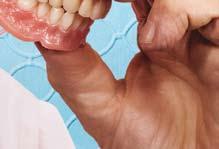



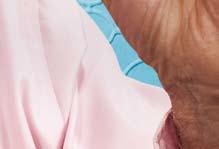


For more information, please visit teethinplace.com InPlace Comprehensive Treatment Options exclusively feature the LOCATOR ® Attachment and other products from ZEST Anchors LLC. Call today for a consultation. Never worry about your loose dentures again. Stop trying to hold your dentures in place with messy adhesives. InPlace™ will allow you to secure your teeth and say “goodbye” to adhesives forever. Visit our dental practice and discover how life-changing and affordable implant-retained overdentures can be. TIRED OF THE GOOEY MESS? There IS a better option. 1469 S. 70th St | West Allis, WI 53214 (414) 383-5833 wisconsinsmiles.com
Editors Note
The snow is coming down, the temps are in the single digets and hibernation starts to set in. What do we do? Meditate. No I’m serious. We can’t control the weather, so let’s all take the opportunity to slow down and work on the inner self. Don’t stress on what you can’t do, enjoy the peace instead. This is the perfect time for our bodies and minds to recover.
I have a seventeen year old running 60 miles a week, and every month he has a week where he reduces the miles, and twice a year he has to stop running to RECOVER. No matter the activity, work, over thinking, we need this down time. So this month let’s reset ourselves and use this time to get ready for spring and all the warmer weather has to offer. You will thank yourselves.
Now that it’s February, the shape of a heart is everywhere. And yes we love our traditions of Valentines Day, I want to remind you that this month is National Heart Health Awareness Month. I know it’s cold but please keep up with your daily workouts or slowly start a routine today. If you mind is to think, your heart is to beat.
So about our Fabulous February issue. It really is a nice positive balance of healthy aging, heart health, self care, finding inner peace, breaking away from any lifestyle slump and really just getting yourself mindful of every aspect that makes you healthier.
So enjoy the issue, love yourself, love others and each day try to make someone’s day a better one by doing selfless acts.
February 2023 EDITION
staff MHL STAFF
Lewis Media Group
Amanda Lewis
Malberry Media
Tom Delgado
Barry Lewis
Est 1992 M L MODERN HEALTH AND LIVING FEBRUARY 2023 FREEPUBLICATION H A GUIDE TO HEALTHY LIVING FOR MEN, WOMEN, CHILDREN AND SENIORS womenshealthfeature Exercise For Getting Better Zzzs 5 Easy Things to Do Every Morning for Better Gut Health How To Discover the Female Warrior Within Yourself Balancing Female Hormones for Health and Well-Being The Benefits of Living Moment by Moment Yoga Well-beingCreating For StagesAll In Women’s Health How the Aging Brain Affects Thinking Senior Lifestyles How Your Heart Changes With Age Employment Good Hydration Linked To Healthy Aging
distribution manager
travel editor founder


Jerry Kornowski
Marlys Metzger
Barry Lewis
contributers contact
The Ommani Center, Livestrong.com, Environmental Nutrition, Nutrition Action Health Letter, Columbia/St. Mary’s, Ascension, Eye Care Specialists, Aurora, Alexian, Eye Physician Associates, Brothers Village, Ye Olde Pharmacy, NIH, Jensen Health and Energy, Foot Solutions, Allergy and Asthma Centers, Tudor Oaks, Active Care Rehab, Greensquare Center for the Healing Arts, Midwest Audiology, Integrative Family Wellness Center, Universal Services, American Camp Association, Home Instead, Manor Care, Tops, Dr Zhou, Captel and MCFI
For information on advertising or to submit articles call, 414-659-6705 or 608-237-6000, or email mhl@wi.rr.com.
Subscriptions are $20 per year. Thanks for reading MHL.
disclaimer
MHL is published on the first of each month . The articles in this publication are in no way intended to replace the knowledge or diagnosis of your doctor. We advise seeing a physician whenever a health problem arises requiring an expert’s care.

thanks
Special Thanks! To all the local professionals that provide us with articles containing new information and keeping all our readers informed of the latest in healthy living.
images



Lewis Media Group | www.modernhealthandliving.com
Yoga can play a vital role in creating health and a sense of well-being through all the stages of a woman’s life. Women go through three main transformations in their lifetime: menstruation,
publishers editor graphic design advertising
Amanda Lewis February 2023 MHL 3
Sending love and positive vibes. Stay safe and stay healthy!

Join our team of holistic health practitioners




We are looking for strategic thinkers, team players and leaders who align with our purpose of improving the health and wellbeing of those we serve
Our work focuses on crea ng meaningful connec ons with each of our clients, helping them to move to ward a healthier lifestyle. We assist each individual’s journey by helping to uncover root causes of their health concerns through holis c natural health and wellness advocacy


If our purpose resonates with you, we invite you to explore career opportuni es and apply today.

MENOMONEE
AND
February 2023 MHL �
FALLS
*Full me or part me (at least three days a week as client load builds). $35/hr, up to $40hr maximum. Qualifica ons: Must have a passion for natural health. Background in Nutri on preferred Willing to train the right candidate NEW BERLIN
SEE WEBSITE TOTALHEALTHINC.COM FOR MORE INFORMATION CLINIC@TOTALHEALTHINC.COM Send re sume to:
WHO UNDERSTAND THAT HEALTH IS PERSONAL
Mindfulness for Your Health
The Benefits of Living Moment by Moment
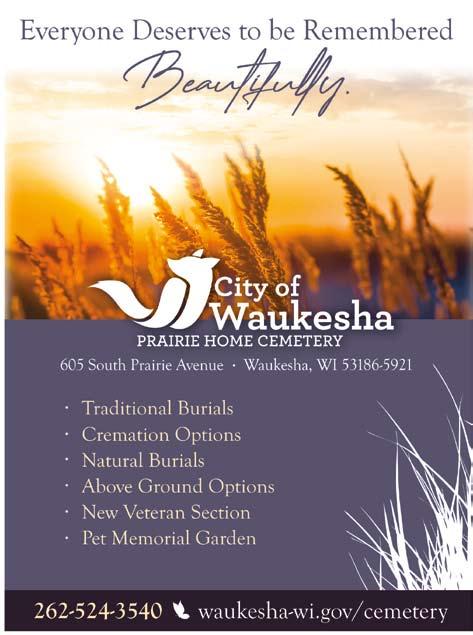
Paying attention to what’s going on right this second can be hard. We often spend more time thinking about what’s coming up in the future. Or dwelling on things in the past we can’t change. We can miss out on experiencing the present.
It’s possible to train yourself to focus on the present moment. You become aware of what’s going on inside and around you—your thoughts, feelings, sensations, and environment. You observe these moments without judgment. This is called mindfulness.
“We’re looking at our thoughts and feelings with curiosity, gentleness, and kindness,” explains Dr. Eric Loucks, director of the Mindfulness Center at Brown University.
Mindfulness has its roots in Buddhist meditation. Meditation is a practice that aims to increase awareness of the mind and concentration.
In recent years, mindfulness has become a household term. Mindfulness programs are now commonly found in schools, workplaces, and hospitals.
Mindfulness can involve a sitting meditation that’s practiced in a quiet space. In this practice, you focus on your breathing or sensations in your body. If your mind wanders—like thoughts popping in about things you need to do—you try to return your mind to the present moment.
But mindfulness doesn’t have to be done sitting still or in silence. You can integrate the practice into things you do every day, like walking or eating. You can also be mindful while interacting with others.
Health Benefits of Mindfulness
Studies suggest that focusing on the present can have a positive impact on health and well-being.

Mindfulness-based treatments have been shown to reduce anxiety and depression. There’s also evidence that mindfulness can lower blood pressure and improve sleep. It may even help people cope with pain.

“For many chronic illnesses, mindfulness meditation seems to improve quality of life and reduce mental health symptoms,” says Dr. Zev Schuman-Olivier of Harvard University.
One of the first mindfulness-based therapies was used for depression. Many studies have shown that it can be effective for some people.
Mindfulness appears to help with depression in two ways. First, it helps you develop the ability to stay grounded in the present, explains Dr. Sona Dimidjian of the University of Colorado Boulder. She studies the use of mindfulness-based treatments to prevent relapse of depression, including among pregnant women.
With depression, “your attention can get hijacked into the past or future,” she explains. You spend time focusing on past negative experiences or worrying about things to come.
Second, mindfulness can help you “de-center” from such thoughts. “It’s like being able to sit on the riverbank and watch thoughts floating by like leaves on a stream,” Dimidjian says. “Developing the skill of mindfulness can help stop you from being pulled into any one thought and carried down the stream. People often experience thoughts like, ‘nothing ever works out for me,’ or ‘it’s always going to be this way. Over time, and with practice, you can develop the ability to stand back from these painful thought patterns.”
Researchers are now studying whether mindfulness training can help with a variety of other conditions, including PTSD, eating disorders, and addiction.
Schuman-Olivier is looking at whether mindfulness can help reduce anxiety among people being treated for opioid use. This could help prevent relapse.
Developing Healthy Habits
Being mindful may also help you make healthier choices. Loucks’s team at Brown created an eight-week mindfulness program for people with high blood pressure.
� MHL February 2023
wellness

For many of us, this is the first time we have seen such widespread concern over illness and the proposed measures to combat it— and the return to school for kids throughout the country doesn’t exactly help matters. While we can take precautions to avoid contracting disease, once it enters our bodies, it’s our own immune system that is left to fight the battle. When such a battle ensues, we want our internal army to have all the reinforcements it needs.

What Exactly Is the Immune System?





Simply put, the immune system is an intricate network of compounds and cells that defend the body against harmful pathogens. Pathogens are microorganisms that cause disease of which there are five general types:
Viruses

fitness & sleep Audiology on wheels? That’s right! HEAR Wisconsin’s new Mobile Audiology Clinic is hitting the road in Wisconsin communities! Learn more at hearwi.org/mac Are you in need of new assistive technology, and want to learn how you can purchase them at a reduced cost with the TEPP Voucher? Visit our state-of-the-art, audiology clinic for a hearing screening and meet with technology experts to determine your product needs. 10243 W. National Avenue, West Allis, WI 53227 | 414-604-2200
Resistance Exercise May Be Superior To A Erobic Exercise For Getting Better Zzzs � MHL February 2023
Building Up the Natural Immune System
Worms
Now, when any of these foreign organisms enter our bodies, an immune response is usually triggered. However, the timeliness and impact of this initial response depend on a number of factors.
Immunity refers to how well our bodies can resist a particular pathogen. There are three general types of immunity.
Innate Immunity
Innate, or natural immunity is a type of general protection from disease that a person is born with. Even with no previous exposure to a harmful invader, our bodies do a pretty good job of executing a satisfactory attack.
Adaptive Immunity
Adaptive, or active immunity is protection that develops over the course of our lives. When we encounter certain pathogens, our immune cells have ways of remembering them, allowing for a more swift response next time that same pathogen is encountered. Our adaptive immunity develops as we are exposed to disease or when we seek immunization through vaccination.
Passive Immunity
Passive immunity is provided when a person inherits protection from an outside source. Common examples of this include the temporary resistance babies acquire from the consumption of breast milk and the transfer of certain antibodies from one to another through gamma globulin injections.
Antibodies to the Rescue
When pathogens enter the body, specialized immune cells such as the B-cell and T-cell flag the substance as harmful, prompting the production of a very large amount of specialized antibodies which are created uniquely to bind to the matching pathogens.
Antibodies are proteins that essentially act as locksmiths, creating various keys out of protein and sugar which adhere to and neutralize the harmful things that enter our bodies. In addition to the antibody’s role of deactivating the foreign substance, its presence recruits other defense cells, like a road flare pinned to the intruder, resulting in a concentrated attack on the pathogen.
After an infection has been adequately fought, these antibodies remain in our blood for a period of time. Depending on the pathogen they target, some last for a lifetime while others last for a period of months. When antibodies are present, our
immune system is armed and ready for another attack.
Signs of Immune System Weakness
It doesn’t take a serious underlying condition to weaken our internal defenses. In fact, studies show that nearly three percent of U.S adults have a weakened immune system. While children tend to have a fairly strong natural resilience, they too can experience weakened immunity if health isn’t a priority. Here are some general signs of immune system weakness:
High stress levels
Constant, nagging sickness or fatigue
Gastrointestinal problems
Strong reactions to common ailments
Frequent infections
Factors that can actively depress our immune system include:
Old Age
Environmental factors such as airborne toxins
Obesity

Poor nutrition
Underlying conditions
Poor sleeping habits
Stress and anxiety
Strengthening Our Defenses
When it comes to the strength of our pathogen-fighting armies, we have a fair amount of influence. Here are some simple ways to boost the immune system, giving it the best chance possible against unwelcome visitors:
Nutrition
In order to create immune cells and antibodies, our bodies need the proper materials. These materials include proteins as well as key nutrients, both of which are rendered from the foods we eat. If we focus on eating healthy foods in reasonable amounts, our bodies will be able to lend us better health.
Exercise
It has been proven that exercise actually helps to increase the production of white blood cells— a fundamental immune system responder. Exercise also helps to reduce stress and works to prevent excess weight gain, two things that negatively impact our bodys’ defenses. Consistent, daily exercise can do wonders for the immune system.
Sleep
February 2023 MHL � Sleep>>page 47
Bacteria Fungi Protozoa
REQUIREMENTS: Hearing Loss, High Speed Internet, Dial-tone. No-Cost Phone with valid third-party certification is subject to change without notice. Terms and conditions may apply. FEDERAL LAW PROHIBITS ANYONE BUT REGISTERED USERS WITH HEARING LOSS FROM USING INTERNET PROTOCOL (IP) CAPTIONED TELEPHONES WITH THE CAPTIONS TURNED ON. IP Captioned Telephone Service may use a live operator. The operator generates captions of what the other party to the call says. These captions are then sent to your phone. There is a cost for each minute of captions generated, paid from a federally administered fund. No cost is passed on to the CapTel user for using the service. CapTel captioning service is intended exclusively for individuals with hearing loss. CapTel® is a registered trademark of Ultratec, Inc. The Bluetooth® word mark and logos are registered trademarks owned by Bluetooth SIG, Inc. and any use of such marks by Ultratec, Inc. is under license. (v1.6 10-19). Can’t Hear on the Phone? Get a CapTel Captioned Telephone at No-Cost to you! The CapTel® Captioned Telephone shows word-for-word captions of everything a caller says, letting you read anything you cannot hear over the phone. CapTel is a NO-COST, federally funded technology available under the Americans with Disabilities Act. To qualify, users need: • Hearing loss • Internet connection • Landline telephone service CapTel 2400i includes Bluetooth® wireless technology & Speakerphone 800-233-9130 CapTel.com
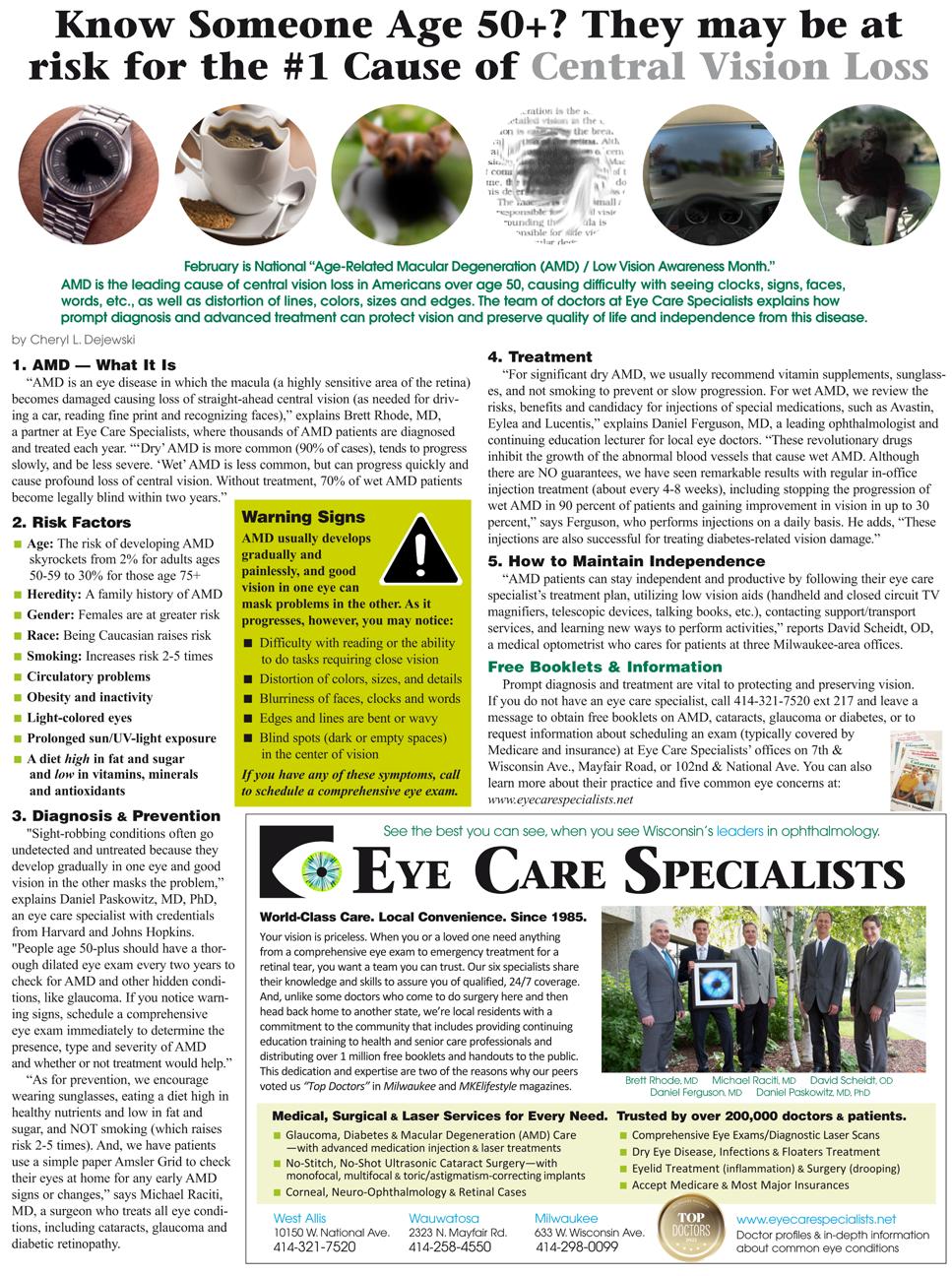
Vitamins for AMD: If and What to Take
By Cheryl L. Dejewski

“The number and variety of eye-related health products is daunting and confusing—for both patients and doctors. The dramatic increase came after two major National Eye Institute studies found that certain specific high levels of lutein, zeaxanthin, zinc, vitamins C & E, and copper could significantly reduce the risk of developing advanced Age-Related Macular Degeneration (AMD) by about 25 percent and the risk of vision loss caused by a certain advanced subtype of AMD by about 19 percent,” says Michael Raciti, MD, a partner at Eye Care Specialists, one of Wisconsin’s leading ophthalmology practices.
AMD is the leading cause of central vision impairment in Americans age 50 and older. AMD affects the ability to see things straight ahead (faces, clocks, signs, text, etc.) and distorts lines, colors, sizes and edges. Prompt diagnosis and treatment are key to protecting quality of life.
Can supplements help fight AMD?
“These nutrients are NOT a cure for AMD and will NOT restore vision already lost from the disease. However, results from the Age-Related Eye Disease Studies (AREDS 1 & 2) showed that they do play a key role in helping people at high risk for
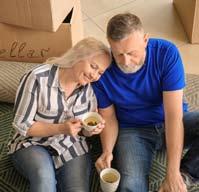
developing advanced AMD to protect and preserve their existing vision. Although studies have suggested that a diet rich in green, leafy vegetables may lower the risk of developing AMD, the high levels of nutrients evaluated in the AREDS cannot be achieved through diet and/or regular multivitamins,” explains Daniel Paskowitz, MD, PhD, an ophthalmologist who has conducted continuing education presentations and webinars for audiences of up to 125 referring optometrists.
Which supplement is best?
“For patients who already have AMD, the best vitamin formulation is determined by the stage (moderate v. significant) of their condition and their smoking status (the AREDS1 formula was found to possibly raise lung cancer risk in smokers). Because of the confusing number of eye-related products crowding shelves, to keep it simple and safe for anyone we determine should take a supplement, our practice recommends only using products designated as having the AREDS2 formulation. For example, Bausch & Lomb provided the formulation used in both studies and now sells a “PreserVision AREDS2” soft gel supplement in retail stores and pharmacies,” says Daniel Ferguson, MD, a partner at Eye Care Specialists, which handles the care of thousands of AMD patients.
Can you still take a multivitamin?
Yes. Most AREDS participants safely took both a multivitamin and the supplement. However, to avoid any overdosing of vitamins, minerals or nutrients, patients should review what they are taking with their eye care specialist, primary care doctor, and/or pharmacist.
Should patients without AMD use supplements?

“No. The AREDS and two other recent studies showed that the only people who benefitted from taking the supplements were those with significant AMD. There was no benefit to those with mild AMD. Thus, they are not expected to help someone with no eye disease. A number of supplements are also being marketed for general eye health (especially for people over 50); however, clinical trials have not been performed to determine if these vitamins can prevent the development of AMD or other eye concerns. As such, we highly recommend that patients see an eye care specialist before spending money on these (somewhat expensive) products to determine if AMD is present, how advanced the condition is, and whether or not there are any benefits or risks to using a supplement,” explains Brett Rhode, MD, Head of Ophthalmology at a major Milwaukee medical center and partner at Eye Care Specialists.
Are there precautions to consider?
“Yes. People should be cautious when using any high-dose vitamins and miner-
February 2023 MHL 11 Vision>>page 4� vision
AMD is the leading cause of central vision impairment in Americans age �0 and older.

subtle and come and go in the early stages. This means that symptoms may not be noticed or taken seriously by family and friends
Some signs that there may be problems:



*Uncharacteristic behaviors: being sad all the time, rude, anxious, loss of interest

*Illness, medication interactions or depression are some conditions that mimic symptoms of dementia. Only a doctor can diagnosis if it is dementia or another condition. Having a full medical workup can treat a medical condition or determine if it
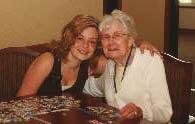

There is currently no cure for dementia but there are non-drug and drug treatments which can help with slowing the symptoms of dementia.
THIS WINTER, DON’T CHECK IN

Brain stimulation can help slow the progression, especially early in the disease. Engaging in activities that are creative or make a person think such as word games, matching, or learning new information are valuable as long as the person doesn’t get frustrated because it is too difficult for them.
Socialization is important to remain engaged. Isolation can be decreased with visits from family and friends, attending events, going to senior centers, or connecting with others through Facebook or Skype.
Exercising 30 minutes a day 5 times a week, eating a healthy diet, and managing chronic diseases such as diabetes or high blood pressure can help slow the progression.
We have a front row seat when it comes to what’s trending in the lives of Milwaukee seniors and we’ve noticed a pattern: every winter, hospitalizations spike off the charts. Which is hardly surprising, given that, in a recent study of nurses, 82 percent of respondents said that winter is the peak season for hospitalization because of vulnerability to colds, the flu, pneumonia and other respiratory infections, and weatherrelated falls and accidents.
Decrease stress with familiar routines and environments. Stress doesn’t cause dementia, but can worsen the symptoms.

What may surprise you is that those same nurses surveyed said that nearly half of senior hospitalizations (48.5%) can be prevented with early detection and intervention. And almost all of the nurses said that the role family plays is as important as the role played by health care professionals.
So what can you do to help make this a hospitalization-free year for your senior? Well, according to Dr. Carolyn Clevenger, president of the Gerontological Advanced Practice Nurses Association, the following five actions are a good place to start:
Medication may help improve mental function, mood, or behavior. For some, the drugs donepezil (Aricept), tacrine (Cognex), rivastigmine (Exelon), and galantamine (Razadyne) are helpful to delay some of the symptoms of mild to moderate dementia. Memantine (Namenda), may be prescribed for treatment of moderate to severe Alzheimer’s Disease. Antidepressants, antianxiety, and antipsychotics may be prescribed to treat depression, excessive anxiety, or hallucinations.
• Follow doctor’s orders
• Don’t ignore symptoms
• Reduce risk of falls and accidents

• Stay active physically and mentally
• Maintain a healthy diet
Seems like common sense, right? But it can be so easy to get caught up in our routines – or sometimes bigger or more urgent-seeming health issues -- that we overlook even these basic keys to our senior’s well-being.
Home Instead Senior Care, a local Milwaukee provider of Home Care services to the elderly is distributing the guide, The Five Ways to Prevent Senior Hospitalizations, developed by Home Instead Senior Care and Dr. Clevenger, which will be free to all Milwaukee families. The booklet offers practical tips on how to make these five simple actions second nature for you and your senior. You can also find information and resources, such as a video on how to assess your senior’s balance to help avoid the risk of falls, at www.preventseniorhospitalizations.com.
For more information on keeping your senior out of the hospital this season, or to get your copy of The Five Ways to Prevent Senior Hospitalizations, please contact Home instead at 414-882-5464, or email us at contact.us@homeinstead.com.

If you own a small business and c an’t af ford adver t ising, we have a solu t ion f or you. We are looking f or people to deliver MHL to 10-15 places once a month in exchange f or adver t ising space in this paper. It takes approximat ely 1-2 hour s to make these drop of fs and we will selec t the dis tr ibu t ion point s to be in your area.

MARCH 2017 MHL 27
Call f or det ails. 414-659-6705
February 2023 MHL 13










the Well Being
William Dunbar,
Midwest College Earn an accredited Master’s Degree in Oriental Medicine wth a Bachelor’s in Nutrition or a Master’s Certification in Acupuncture. Online, Evening and Weekend Classes Available “An Ancient Medicine For Modern Times” 6232 Bankers Road 6232 Bankers Road, Racine, Wisconsin 53403 | 8950 Gross Point Road, Skokie Illinois 60077 Approved by the Illinois Board of Higher Education and the Wisconsin Educational Approval Program. Accredited by the Accreditation Commission for Acupuncture and Oriental Medicine. Become an Acupuncturist in 2 1/2 years *Financial aide available for those who qualify Lifestyle the spirit never ages. 14 MHL February 2023
Dr.
President of
Could You Have Lupus?





Lupus is a chronic autoimmune disease with no single cause and no cure. For reasons that are not currently known, nine out of ten people diagnosed with lupus are women, and women of color are two to four times more likely to develop it (www. lupus.org). Lupus causes the body’s immune system to attack its own healthy tissue, resulting in chronic pain, chronic fatigue, rashes, and organ injury or failure. Because many of its effects are internal, and symptoms overlap with those of other diseases, lupus is difficult to diagnose; it takes on average six years from the initial reporting of symptoms for someone to get a confirmed lupus diagnosis.
For these reasons and more, it is important for people to be aware of lupus and its affects – knowledge about its symptoms can significantly reduce the time it takes to get a diagnosis and can help lupus sufferers find the best treatment plan earlier. The infographic below details common signs and symptoms of lupus.
The Lupus Foundation of America, Wisconsin Chapter has information and resources about lupus for anyone – whether you are curious about whether you have lupus, are looking for rheumatologists or other specialist healthcare providers, community support groups, or other information. Awareness is the key to early detection, better research and treatments, and understanding that just because someone doesn’t “look sick” doesn’t mean that they aren’t fighting a courageous battle every single day.
February 2023 MHL 1� lupus including financial your protecti incur supplement and Their $150 Advantage save nearly for the product so working insurance and they best term would her similar she
to remain mail of do situation, current and Sherry Baggerley Call (262) 523-1440 today. Call (262)844-4752 today.
representative, care suggestions
Of individuals diagnosed with lupus, �0% are women.
The best treatment depends on your preferences
Hormone Therapy and Alternative: Therapies During Midlife for Men and Women

Dr. Janice Alexander
Midlife for men and women is a time when some note bothersome changes in physiology. The good news is that many do not need treatment for these symptoms. The best treatment depends on your preferences. Medications and supplements are not the choice of everyone, and an individual’s health history should be considered before a treatment choice is planned.Yet, it must be emphasized that some of the discomforts of mid-life such as obesity, depression, hot flashes, erectile dysfunction can be improved with lifestyle changes, diet and exercise modifications, weight management and smoking cessation. These approaches do no harm and cost very little.
Anxiety, stress and depression are common during the winter months and especially this past year while we are under a pandemic. Most of us have had limited socialization which always makes life lonely and more difficult.We need to keep up with the 150 minutes of aerobic exercise weekly and the 30 minutes of strength training three times a week in order to keep our spirits up along with our muscle mass. Food triggers such as too much caffeine or alcohol can make depression worse and cause sleep disturbance. Hot and spicy foods may start to cause GI distress or make hot flashes worse. Sometimes it is best to limit these in your diet. For decades women have used soy products and herbs such as black cohosh, evening primrose oil, ginseng, kava, 5-HTP, St. John’s wort and natural progesterone cream made from yams to treat menopausal symptoms.These supplements, however, are not regulated by the FDA and may be contraindicated when used with certain medicines or medical conditions. For example, some women with breast cancer should not be using soy products. Supplements and vitamins may also cause excessive bleeding, so it is always a good idea to discuss these with your physician, especially if you plan on having a surgical procedure.
Prescription Hormone Therapy is



available to symptomatic men and women who are appropriate candidates for this type of therapy. A woman’s body makes three types of hormones: estrogens, progesterone and testosterone.The term ‘bioidentical hormones’ is confusing as scientists and other health care professionals view them as chemically related to a person’s own naturally occurring hormones, whereas, to others, this term refers to a custom compound that is not manufactured by a commercial pharmaceutical company. Estrogen can be supplied as a cream, a patch, a vaginal ring, an oral or vaginal tablet or a subcutaneous pellet, with or without progesterone or testosterone. Progesterone alone can be an option for treating menopausal symptoms and can be prescribed as a topical cream, oral tablet or implant. Testosterone can be provided to men and women as a cream or ointment. Men can also receive testosterone as a patch, injection or tablet. While it is true that custom compounded hormones are not required to be approved by the FDA, many have found them to be helpful during midlife to control their symptoms.
Other prescription drugs such as SSRIs (selective serotonin-reuptake inhibitors) have also been used to treat depression and hot flashes. Complementary and alternative medicine have also been used and include acupuncture, herbal, dietary and energy therapies. The importance of vitamin and mineral balance should also be emphasized especially since we rely on them to maintain vital structures. During this time of the Covid-19 pandemic, it is important for you to get an appropriate amount of Vitamin D3 (usually 2,000IU daily) and Zinc (varies between 20-50 mg). If you are looking for more information on preventive and wellness therapies, come visit us at the Cedarburg Family Wellness & Aesthetics Center. We have Covid-19 preventive measures in place to keep you safe during your visit. TeleHealth is also available.
For more information visit cedarburgfamilywellnessaesthetics.com.


1� MHL February 2023 hormone therapy
5 Easy Things to Do Every Morning for Better Gut Health
By Marygrace Taylor
Your gut works hard for you all day, every day, digesting food, helping your immune system function, managing your mood and more. Showing it some love when you first wake up can help your GI tract function at its best — and in turn, support your health as a whole.

“Engaging in healthy habits and behaviors first thing in the morning can set the tone for the day and lead to more healthy habits overall, which can improve gut health,” says Aditya Sreenivasan, MD, a gastroenterologist at Lenox Hill Hospital in New York.
And in fact, the most effective practices also happen to be some of the simplest. Here, Dr. Sreenivasan shares his top five morning habits for better gut health. They’re so easy, you can start them tomorrow.
1. Drink a Glass of Water
Before you reach for that coffee, help yourself to a glass of H2O.
“Taking the opportunity to drink a glass or two of water every morning is a great way to get a jump on drinking an adequate amount throughout the day,” Dr. Sreenivasan says.
That’s important from a GI perspective because people who don’t get enough wa-
ter are more prone to problems like bloating, indigestion, constipation and overeating, he adds.
As for the purported benefits that drinking warm or hot water in the morning is somehow better for your system? It’s fine to warm up your water if that’s your preference, but there’s nothing wrong with cold water either.
“It doesn’t matter what temperature the water is. Within seconds of entering your body it will become the same temperature as your body,” says Dr. Sreenivasan.
2. Try to Eat Around the Same Time Each Morning
Eating a wholesome breakfast will help power you through the day. And if you try to dine around the same time each morning, it can also help to keep you regular.
“Having a set schedule for waking up and eating breakfast can help your body regulate the release of various hormones that control things like when you have your bowel movements,” explains Dr. Sreenivasan.

That can be especially helpful if you’re experiencing constipation or are trying to manage IBS.
3. Eat a Fiber-Rich Breakfast
Speaking of breakfast, make a habit of reaching for one that’s got some roughage. Upping your fiber intake can improve the health of your microbiome in as little as two weeks, according to a March 2021 study in mSystems. Plus, it acts as a natural remedy for constipation by making stools bulkier and easier to pass.
“An ideal breakfast would have a combination of whole grains, protein and fruits and vegetables,” Dr. Sreenivasan says. (Think: oatmeal with almond butter and berries, or a veggie omelet with whole-grain toast.)
On the other hand, consider saving the bacon or sausage for once-in-a-while treats. “Classic breakfast meats are associated with inflammation in the GI tract and have been shown to increase the risk of GI cancers like colon cancer,” Dr. Sreenivasan says.
4. Take a Walk
Better heart health, weight control, a brighter mood, a stronger immune system. A daily stroll will do your body good in so many ways.
But here’s one you might not have considered: Regular exercise can help prevent problems like constipation and bloating.
“When you move, it helps your digestive tract move as well, and prevents things from backing up,” Dr. Sreenivasan explains.
�. Go When You Have To (but Don’t Spend Too Much Time Waiting)
February 2023 MHL 17 Our prepared foods are all natural made-from-scratch featuring local or organic ingredients. It’s what sets us apart and you can taste the difference in every delicious bite. What’s not to love! What’s not to love! 4 stores in greater Milwaukee 24/7 online shopping www.outpost.coop nutrition Gut>>page 4�
How To Discover the Female Warrior Within

Female Warriors have existed throughout history, from Nefertiti to The Amazon women to Joan of Arc. Currently, two movies portray the archetype of female warriors in The Woman King, based on true events of an all-female force that protected the Kingdom of Dahoney in the 1800s; and Black Panther: Wakanda Forever, a Marvel Studios superhero film where female warriors protect the Kingdom of Wakanda from intervening world powers. So how do today’s women discover their female warrior within to have the strength and confidence to defend themselves?
“Female warriors need the physical strength to be empowered, but also the mental confidence to defend themselves and their core feminine values,” says Kathryn Leary, Founder and CEO of OneFirelight, a newly introduced wellness app that features strength building, athletic conditioning, Martial Arts, boxing, and HIIT streaming classes, as well as classes to get in touch with one’s softer side with Yoga, Pilates, Crystal Meditation and Dance. According to Yui Hosoda, OneFirelight Martial Arts Instructor, “It all starts with the individual. Anyone, no matter age, or body type, can develop strength through exercise and training, which will develop the confidence needed to defend oneself and avert dangerous situations. Martial Arts allows you to build core strength since all of the movements come from the center. That strength
is needed for self-defense and protection.” Because you don’t know how strong you are until being strong is your only choice, here are Yui’s top picks for developing a “female warrior” workout routine for exercising the core muscles and building strength:
1. Wood Choppers with medicine ball (Recommended at least 4 lb. weight).

This exercise stabilizes and activates your core. It keeps your trunk activated in a rotational movement pattern, as well as multiple abdominal, back muscles, arms, and legs for stability. Begin with the feet shoulder- width apart and parallel to each other. Holding the medicine ball with both hands and arms extended, start at the bottom of one side of the hips. Lift and rotate the ball up above the outside of the opposite side of your head, then cutting diagonal across down back to where you started. (Make sure to pivot your feet to the side your body is turning to avoid straining your back, and minimize the movement of your trunk, relying on the pivot and your arms). Up and down is one rep. Recommended 8-15 reps depending on your level and weight of the ball.
2. Leg Raises on the Mat.
This is a variation of the abdominal crunch and also an isolation exercise for the core muscles. It focuses on the lower abdominal muscles as it is under constant tension during the range of motion. Additionally, it is a great strengthening exercise for your hip flexors. By lying flat on your back on the floor with legs straight and hands under your lower back for support, raise both the legs up to a 45-degree angle. And then slowly bring them down back to the floor position. Repeat for 8-15 reps.
3. Medicine Ball Twist Ups (Recommended at least � lb. weight).
This full body exercise targets all different muscles including core, legs, shoulders, and arms. In a squat stance with knees bent 90 degrees, start by holding the medicine ball with both your hands and arms bent at elbow in front of your stomach. Bring the ball across to the left while you also turn your torso and arms to that side. Then bring the ball straight across through the other side to your right. Once you twist fully, bring the ball up over the shoulders, extending your arms and pivoting your left feet. Then bring the ball back down and across to the left side. Repeat on both sides 8-15 reps.
4. Superman (woman) on Floor.
This is a great exercise that strengthens both your core and back at the same time.
1� MHL February 2023 REAL HEALTH & FITNESS W61 N513 Washington Avenue Cedarburg, WI 53012
womens health
43
“Female warriors need the physical strength to be empowered, but also the mental confidence to defend themselves and their core feminine values.”
Warrior>>page
Redefining Health

Balancing Female Hormones for Health and Well-Being


 By Kalpana (Rose) M. Kumar, M.D.
By Kalpana (Rose) M. Kumar, M.D.
If you are a woman who has experienced any or all of the following symptoms: PMS, moodiness, brain fog, memory lapses, night sweats, hot flashes, irritability, depression, anxiety, weight gain, sleeplessness, hair loss, water retention, muscle pain, lack of motivation, in addition to a variety of many low-grade symptoms that erode well-being that are discounted as symptoms of ‘getting old,’ you could be suffering from hormone imbalance.

Hormones are chemical messengers produced in our body that control and regulate the activity of cells and organs as well as their functions. They are produced by endocrine glands and exert their effects at a distance as well as in close proximity to the site of their production.
The human body produces hundreds of hormones. The ones listed below have the greatest impact on a woman’s mental and physical health:
1. Thyroid hormones: regulate energy, weight and metabolism. These are the most misinterpreted and inadequately treated hormones in women by the traditional medical system. The proper test for thyroid hormones is a thyroid panel, not the TSH reflex, the standard test ordered as part the traditional thyroid protocol. Additionally, since the primary building block of your thyroid hormones is iodine, (and iodine levels are lacking in our soil due to unsustainable farming practices), currently, more women are experiencing thyroid dysregulation from its lack. Low thyroid levels (1) can cause symptoms of weight gain, mood and sleep disturbance, anxiety, depression, water retention, fatigue and skin changes, to name a few. Balancing your thyroid is essential for your health.
2. Estrogen: One of the main hormones
produced (2) by a woman’s ovaries. In addition to regulating mood and emotions, estrogen also effects your feelings of well-being especially when balanced with progesterone. Adipose tissue (fat) also produces estrogen, so if you are carrying extra body weight, you may be estrogen dominant. Estrogen dominance (too much estrogen not balanced by progesterone) can cause symptoms of further weight gain, anxiety, mood swings, sleep disturbance and mental fog. Estrogen dominance can also increase your risk for breast cancer, endometriosis, uterine cancer, strokes and hypertension.
3. Progesterone: This female hormone (3) produced during ovulation, is essential for feelings of well-being and mental and emotional regulation. Progesterone must be present at levels high enough to balance estrogen for half a month while a woman is still menstrual. Stress and poor diet can lead to low levels of progesterone. When enough progesterone to balance estrogen is not present, not only does this cause estrogen dominance, but can also cause depression, anxiety, memory loss, hypertension, muscle and joint pain, fibromyalgia and irregular and heavy periods. In addition, the most common cause of menopausal symptoms of fatigue, anxiety, depression, mental fog, memory loss and weight gain can be the result of declining progesterone levels, so balancing estrogen with progesterone is essential for a woman’s well-being as she progresses towards menopause.
Even after menopause, a low dose of natural progesterone can lead to an improvement in emotional and mental wellbeing. Over the counter progesterone is dangerous for women to use as it is not standardized or unregulated and can do more harm than good. Natural progesterone should always be prescribed and monitored under the supervision of a physician who specializes in natural hor-
February 2023 MHL 1� xxxx>>page 3�
women’s health
A Closer Look Into Hot Stone Massage

If you suffer from anxiety, stress, back pain, headaches or poor circulation, hot stone massage could be the treatment for you.
Hot stones were used as healing therapy for thousands of years. In 1993, the technique was formally introduced as LaStone® therapy by Mary Nelson, a massage therapist from Tucson, Arizona. The concept of using hot stones was to bring the body to a deep relaxed state, therefore allowing the body to self-heal. When the treatment is applied in the most effective way, this style of massage can be both relaxing and therapeutic at the same time.
The stones are smooth black basalt, which retain heat very well. They are placed in water and heated to approximately 120 to 130 degrees. The therapist can adjust the temperature of the stones to meet the needs of each client to assure they are comfortable. A sheet or towel is placed between the stones lying directly on the client as a protective cover. The direct heat penetrates into the muscle tissue causing it to soften and relax to a lengthened state, while bringing oxygen and blood to the area. As a result, the pain starts to decrease. The therapist can apply deeper pressure if necessary to easily melt away the knots with minimum discomfort to the client. The therapist will also be massaging with the stones using Swedish techniques to introduce the heat to the body. This increases blood and lymph flow, which promotes the detoxification process.
A typical hot stone massage will last for 90 minutes, giving the therapist enough time to do a full-body treatment. A wide range of stone sizes are used depending on the area of the body being worked on. The client will be lying on their back to start, with larger stones placed on the abdominal area. This is helpful to relieve any digestive discomfort or menstrual pain for women. Stones
are also placed between the toes and under the palms of the hands. Both of these areas have reflex points that affect the entire body, and when exposed to heat, the body begins relax. A large oval stone that contours to the curve of the neck is placed under the head for the client to rest on. This will help to alleviate any tension caused from headaches and stiff neck muscles.
Once the stationary stones are in place, the massage begins with warm stones applied to the face to loosen the jaw, temples and forehead. Cold marble stones are then placed above the brow to relieve sinus pressure and below the eyes to reduce puffiness. The stones on the face and under the head are removed after a few minutes. The therapist begins massaging with the stones, using a series of applications to loosen and soothe the muscles of the neck, upper shoulders, chest, arms, hands, legs and feet.
Massage may give your immune system a boost. According to a 2010 studyTrusted Source, a single session of Swedish massage therapy had a positive and acute impact on immunity. Blood samples taken before and after the massage showed a decrease in arginine-vasopressin, a hormone that helps regulate blood pressure and water retention.


Studies show that a hot stone massage may be a helpful way to reduce stress and anxiety, promote relaxation, and ease pain and muscle tension. It may be helpful for a variety of conditions and circumstances.
To make sure you have a positive hot stone massage experience, only use a massage therapist trained to work with hot stones. You may feel sore during your massage or the day after. This may be due to deep tissue manipulation and pressure. You shouldn’t feel pain. If you are uncomfortable or experience pain during your massage, let your massage therapist know right away.


20 MHL February 2023 Did self-isolation leave you with new aches and pains? Do you feel physically deconditioned? STOP PUTTING OFF YOUR ACHES AND PAINS! STOP PUTTING OFF YOUR ACHES AND PAINS! Let us help you return to a sense of normalcy Let us help you return to a sense of normalcy and become pain-free! and become pain-free! 136 N. MAIN ST. SUITE 308 THIENSVILLE, WI 53092 (262)-478-0920 Get Better Faster. Get Better Faster. drsofpt.com drsofpt.com
massage
Massage may give your immune system a boost.
Unlike exercise, yoga addresses more than just the physical body.
Yoga Creating Well-being For All Stages In Women’s Health
Yoga can play a vital role in creating health and a sense of well-being through all the stages of a woman’s life. Women go through three main transformations in their lifetime: menstruation, pregnancy and menopause. These stages of a woman’s life are more than just physical changes. They encompass every aspect of a woman’s being: physical, physiological, mental, and emotional.
Unlike exercise, yoga addresses more than just the physical body.
Yoga poses, or asanas, affect all the vital organs and systems of the body, such as the digestive system, the respiratory system and the endocrine system. The endocrine glands secrete hormones which circulate through the body. A healthy physical and mental state depends on the balanced secretion of hormones.
Iyengar yoga has a long tradition of paying special attention to the needs of women and the stages of the reproductive cycle. In the Iyengar yoga system, certain poses and sequences of poses stimulate the endocrine glands to ensure their proper functioning, while other poses and sequences of poses help normalize the overfunctioning of the hormones and maintain balance in the system.
Iyengar Yoga helps restore hormonal balance, soothes the nervous system, and promotes a broad range of other physiological and emotional benefits that address every stage of a woman’s cycle.

Menstruation
Menstrual sequences of poses are designed to help the student develop a practice which is responsive to the hormonal activity that they experience each month. The supported poses are very helpful for such problems as PMS, menstrual cramps, excessively heavy periods, and absence of menstruation. A menstruating student should not engage in strong abdominal or twisting poses, or go upside down.
Prenatal Yoga
Prenatal/postnatal classes are designed for expectant mothers and for those who
have recently given birth. Poses are tailored to accommodate individual needs and different stages of pregnancy. The classes include poses to help create space for the baby and increase the comfort level of the mother.

• Increase emotional and physical well being
• Create space for baby
• Reduce backaches
• Relieve digestive disorders, headaches and fatigue
Yoga helps to maintain strength, flexibility and calmness during pregnancy and helps to relieve backache, fatigue, digestive disorders and headaches which often appear sometime during the pregnancy. Students also learn breathing exercises which will help calm the nervous system.
One month after childbirth, women can attend class and learn how to transition back to a yoga practice in a safe, systematic manner. Women who have had a c-section need to wait 6 months before returning to class.
Perimenopause • Menopause

Yoga can help to navigate this critical phase of life with a practice that calms the nervous system and brings emotional balance. Issues covered include hot flashes, depression and fatigue, as well as the rewards that present themselves once the perimenopausal transition has passed.
Iyengar yoga is uniquely qualified to help manage all the transitions and transformations in a woman’s life. Make sure to study with a qualified instructor and participate in classes that are set up to address the issues and stages of your life. The studio should have a range of props such as chairs, bolsters, blocks and straps to accommodate everyone.
Susan Goulet is a certified Iyengar Yoga instructor at the Senior I level. She owns and teaches at the Milwaukee Yoga Center which she opened in October 2000.
February 2023 MHL 21
women’s health
3948 N. Maryland Ave. Milwaukee, WI 53211 3948 Maryland Ave. 414.332.3551 www.mycmke.com Yoga for Every Body! Yoga for Every Body! Nourish Your Spirit Different Levels of Classes Experienced teachers Iyengar Yoga, based on correct alignment
Lifestyles
MISSION CREEK
www.missioncreekofeden.com
WHO WE ARE
WHO WE ARE
Mission Creek is the best local assisted living and memory care for you, your family, friends, and loved ones. We work hard to keep our residents and this community great.
Mission Creek is the best local assisted living and memory care for you, your family, friends, and loved ones. We work hard to keep our residents and this community great.
WHAT WE DO
WHAT WE DO
We work directly with our residents and their families to keep everyone involved with their interest and pursuits. Your community remains at the center of life, alongside top-of-the-line care for a comfortable and fulfilling lifestyle.


We work directly with our residents and their families to keep everyone involved with their interests and pursuits. Your community remains at the center of life, alongside top-of-the-line care for a comfortable and fulfilling lifestyle. VISIT

Mission Creek
3217 Fiddlers Creek Dr, Waukesha, WI 53188 (262) 832-1020

MODERN HEALTH AND LIVING Senior A POSITIVE GUIDE TO THE NEXT PHASE OF LIFE
SENIORLIFESTYLE.COM OR CALL 262-896-8888 TO LEARN MORE.
22 MHL February 2023
Healthy Tips for Women
women can take action to reduce risk of disease and stay healthy both mentally and physically.
 Revitalize Wellness Corner with Lee Zehm-Clay RN, BSN, FCN, HES St. Camillus Revitalize Wellness Manager
Revitalize Wellness Corner with Lee Zehm-Clay RN, BSN, FCN, HES St. Camillus Revitalize Wellness Manager

Women and men both face a variety of health conditions as they age. However, there are specific illnesses and disorders that overwhelmingly affect women more than men. In the U.S., women also live longer than men, which means women have a greater chance of developing health issues simply because their bodies have more time to develop diseases. Older women are more likely than men to have multiple, chronic health ailments – such as arthritis, high blood pressure, osteoporosis, urinary, bowel and breast health conditions. Women also have increased incidences of cognitive problems. Fortunately, women can take action to reduce risk of disease and stay healthy both mentally and physically. Here are some tips from the American Geriatrics Society’s Health in Aging Foundation:
1. See your healthcare provider regularly. Even if you feel perfectly healthy, see
your provider at least once a year for a checkup. Annual visits are a benefit covered under Medicare services… take advantage of this.
2. Eat a rainbow. (No, I do not mean Skittles!) Each time you eat, scan your plate looking for the deep rich colors of the rainbow. Does your meal contain the reds, yellows, oranges, greens, blues and purples of the rainbow? If yes, great! For the most part it means you are consuming a healthful diet. No matter our age, we still need to eat health-filled foods. Fewer calories yes, but nutrient rich foods are always needed. Need a little help with your diet? Try using the USDA’s updated Choose My Plate for Older Adults free website.
3. Take medications, vitamins, and supplements as directed. When you visit your provider (for that annual appointment), bring all of the pills, ointments, and eye drops you take (including Over the Counter medications, vitamins, herbs, and supplements). Take your medicines directed, and tell your provider right away if a medication seems to be causing any problems or side effects.
4. Get screened. Screening tests can help diagnose health problems early. Early diagnosis leads to successful health outcomes. Ask your provider about testing for; colorectal cancer, diabetes, cholesterol, blood pressure, bone density, depression, hearing and vision, and sexually transmitted illnesses (Yes, older adults still are sexually active!). Do not forget to ask about Vitamin D levels, especially if you live away from the earth’s equator.
�. Get vaccinated. Check with your healthcare provider to make sure you are getting your annual flu shot, have received your two pneumonia vaccinations and your shingles shot, and get a Tetanus Diphtheria Pertussis vaccine every ten years.
�. Drink alcohol in moderation Older women should drink no more than 3 “adult beverages” on a given day and less than 7 total in a week. (One drink = 12 ounces of beer, 5 ounces of wine, or 1.5 ounces of hard liquor.) Depending on your health condition or medications, you may need to drink less or not at all.
7. Exercise your body. Regular exercise is important for good health. It tones up your heart, improves circulation, and strengthens muscles and bones. It also increases brain function, lifts your mood, and can help prevent and ease depression.
�. Exercise your brain. This gets a little tricky because we always like to do what we enjoy; read a book, crossword, or jigsaw puzzles. But, just like physical exercise, you have to make your brain “sweat” a little. If you always read, try your hand at putting a puzzle together. If numbers are your thing, try a good book. Mix it up! Check out free apps on your computer or smart phone. There are plenty to choose from.
As always, until next time - be well and stay healthy.
To learn more about St. Camillus Life Plan Community and the Revitalize Wellness Program, call 414-259-6310 or visit www.stcam.com.

February 2023 MHL 23

Very often adult children are the ones to whom the task falls of finding a place for their aging parents to live. As if it isn’t already an emotionally difficult job, the terminology is difficult to understand, the choices are confusing, and most residences make comparisons very hard to make. After all, how do you compare a one bedroom extended with services with a plain one bedroom and what does that even mean?
Here are a few simple things to keep in mind that will help you get started, and give you an idea of the questions you need to ask.
Independent Or Assisted Living?


Independent Living is like living on your own in an apartment building. You get no services or nursing care at all; you come and go as you please; you have no special health requirements.


Assisted Living means you need help with at least one of the “activities of daily living,” or ADLs. They are dressing, feeding, bathing, toileting, and transferring (moving from bed to chair, chair to walker, etc.).
In order to be accepted into an assisted living, the nurse manager of the establishment will do an assessment of the prospective resident to determine if the applicant is, indeed, a candidate for assisted living. At the same time, the nurse manager will make sure that the facility will be able to meet his or her needs.
RCAC



Some facilities are licensed to offer “à la cart” assisted living services in an independent living apartment. The resident would pay a fee to be under the nursing services of the residence. The permits them to keep a chart on the resident, speak to the resident’s physicians, and document his or her care. The resident can then choose certain other services, which are paid for separately. This is different from true assisted living, in which all the services are included in the rent.
How Big An Apartment Does Mom Really Need?

This is one of the hardest things to come to terms with. For many people in Wisconsin, this will be the first time they have moved in 52 years. They are
Planning The Next Phase With Your Adult Child


used to being in their houses, with so much furniture, and many personal belongings around them. Then they tour an assisted living or independent apartment. If it is as small as a studio apartment- one room -- they are shocked and dismayed. Even though some of them seem quite spacious, with a small kitchenette, full bathroom, and lovely view out of the windows, it is still quite a difference from what Mom or Dad is used to.
But often the reality is that the great big house they are used to is going to waste. Think about what rooms are actually being used. In most cases, it is the bedroom, bathroom, and kitchen. Perhaps one other room as well. It is a good idea to discuss this before starting to tour so the potential resident has a realistic view of what he or she needs when the time comes to look. Then focus on the rest of the building. After all, the many common areas of the building are the rest of your house! Is there a library? You can sit there and read books. A lobby? The perfect place to sit with friends to chat between activities or before dinner. There may be small alcoves with comfortable furniture, or special rooms set aside for games or cozy reading rooms. The point is: the entire building is your home; not just your own apartment. So don’t just tour the apartment. Be sure to look at everything as though you will use it all.
The same thing applies to the furniture. When was the last time your parents used the full dining room set? If it is something that is used only once a year or less, keep in mind that their new residence will most likely have a private dining room that can be reserved for private parties. In other words, look practically at household possessions.
There is a new industry of senior relocation services that has been created specifically to help aging adults prepare to leave their long-time homes and move into smaller residences. These experts will look at both the new space and the old and, for a fee, help to make the tough decisions about what to bring and what to leave. They are experienced in knowing what will fit, what is necessary, what is an emotional need, and how to make it all
Plan>>page 4�

February 2023 MHL 2�
Here are a few simple things to keep in mind that will help you get started, and give you an idea of the questions you need to ask.
Independent, Senior Communities

Alta Mira II offers one & two bedroom apartment homes for those 55 & older. Alta Mira II is a non-smoking community that was constructed with special features for those who may be deaf or hard of hearing. Alta Mira II offers an array of amenities and social activities for its residents. Income restrictions apply.
Bell Tower Place is a non-smoking community offering elegant one & two bedroom apartment homes. Located in a quiet, residential neighborhood you are still situated in close proximity to all the modern conveniences you will need to live an independent, maintenance-free lifestyle.
Cedar Glen offers spacious one & two bedroom apartment homes centrally located in Wauwatosa, just 10 minutes from all of your shopping & dining needs. A variety of activities, 24-hour emergency maintenance and on-site management allow for the independent lifestyle you deserve! Income restrictions apply.

Granville Heights offers one & two bedroom apartment homes in a non-smoking community. Centrally located, you will have easy access to churches, grocery stores, restaurants and more while enjoying a relaxed, maintenance-free lifestyle within the community. Income restrictions may apply.

High grove offers luxury one adn two bedroom independent senior apartments located on the Woodland Ridge Campus. Our spacious apartmetns incldue a patior


Our non-smoking community is the perfect place to call home.
Hill Crest, located on the Woodland Ridge Campus offers centrally located one adn two bedroom apartment homes fo rthe independent senior. In close proximity to all of your shopping, dining and entertainment needs, our social activities will have your social calendar full year-round. Income restrictions may apply.
Located on the Woodland Ridge Campus adjacent to the Towering Woods Nature Conservancy, Crestview offers one & two bedroom apartment homes in a non-smokin, pet-friemdly (restrictions apply) community. Enjoy an indepdendent lifestyle with 24-hr. emergency maintenance available. Income restrictions may apply.
tour at any of our Horizon managed properties www.horizonseniorhousing.com




Alta Mira II Menomonee Falls - 55+ 262-719-3884 Cedar Glen Wawautosa - 55+ 262-719-3884 Bell Tower Place Franklin - 55+ 414-254-8410 Granville Heights Milwaukee - 55+ 414-357-6740
Live your best life! Call for a tour today!
High Grove 414-541-3333 We invite to take a
Hill
Crest* 414-541-3333 Crest View* 414-541-3333
Be happy Be Social
more research is needed, researchers think that over the long term the participants may have decreased their risk for disability, dependency, and dementia in later life. Many causes need help from volunteers. For example, groups that help homeless people need volunteers to serve meals or organize clothing donations. The USO needs people to send care packages to soldiers stationed overseas. Animal shelters need help caring for dogs and cats. Senior groups need aides to help people with disabilities run their errands. The list goes on. Researchers have found that older adults, like Maria, who take part in these types of activities often do so to make a difference in their communities and feel good about what they are doing.
But, there are plenty of other options for places to volunteer or be socially active. Where you look to find these opportunities might depend on what you are interested in doing. The following are some examples of social and productive activities you might like:
Volunteering at a library, hospital, or other community health facility
Joining a senior center
Playing cards and other games with your friends
Going to the theater, a movie, or a sporting event
Traveling with a group of older adults, perhaps a retiree group
Visiting friends and family
Trying different restaurant
Gardening in your backyard or at a community park
A number of early studies found that people who are involved in hobbies and other social and leisure pursuits may be at lower risk for (and less likely to develop) some health problems, including dementia.

Research shows that people who are sociable, generous, and goal-oriented may be happier and less depressed than other people. Sitting at home alone could help explain why Melvin is not feeling like himself. Volunteering might help Melvin feel better. According to researchers, older adults who participate in what they believe are meaningful activities, like volunteering in their communities, say they feel healthier and happier. For example, older adult volunteers from an urban community worked approximately 15 hours a week in their neighborhood public elementary schools, in a special program designed to improve children’s school success. Researchers learned that the older volunteers increased their cognitive, social, and physical activity levels. Participants also reported feeling personal satisfaction from the experience. Although
Organizing a park clean-up through your local recreation center
Taking a cooking class
Singing in a choral group
Joining a local theater troupe
Forming or joining a book club
Going dancing
Taking a group exercise class
Playing a musical instrument, learning a new instrument
Joining a group interested in a hobby like knitting or wood carving

Getting a part-time job
Everyone has different limits to the amount of time he or she can spend on social or other activities. What is perfect for one person might be too much for another. Ted may cut back his volunteer hours and find that doing a little less is just right for him. His friend Rasheed may feel that doing two activities—a monthly book club and tutoring once a week in the high school—is enough.
February 2023 MHL 27
How the Aging Brain Affects Thinking
Aging may also bring positive cognitive changes.
Some changes in thinking are common as people get older. For example, older adults may:
Be slower to find words and recall names
Find they have more problems with multitasking
Experience mild decreases in the ability to pay attention
Participate in Research
Researchers are working to understand normal brain aging, why some people stay cognitively healthy longer than others, and what might protect your brain as you age.
Aging may also bring positive cognitive changes. For example, many studies have shown that older adults have more extensive vocabularies and greater knowledge of the depth of meaning of words than younger adults. Older adults may also have learned from a lifetime of accumulated knowledge and experiences. Whether and how older adults apply this accumulated knowledge, and how the brain changes as a result, is an area of active exploration by researchers.
Despite the changes in cognition that may come with age, older adults can still do many of the things they have enjoyed their whole lives. Research shows that older adults can still:
-Learn new skills
-Form new memories
-Improve vocabulary and language skills
-Changes in the Aging Brain
As a person gets older, changes occur in all parts of the body, including the brain.
Certain parts of the brain shrink, especially those important to learning and other complex mental activities.
In certain brain regions, communication between neurons (nerve cells) may not be as effective.
Blood flow in the brain may decrease.
Inflammation, which occurs when the body responds to an injury or disease, may increase.
These changes in the brain can affect mental function, even in healthy older people.
For example, some older adults may find that they don’t do as well as younger individuals on complex memory or learning tests. However, if given enough time to learn a new task, they usually perform just as well. Needing that extra time is normal as we age. There is growing evidence that the brain maintains the ability to change and adapt so that people can manage new challenges and tasks as they age.
The Secrets of Cognitive Super Agers
Some people in their 80s, 90s, and beyond defy the common assumption that cognitive decline goes hand in hand with aging. These people, called cognitive super agers, have memory performance comparable to people 20 – 30 years younger. Research is ongoing to understand what sets these people apart to help others prevent (or reverse) age-related cognitive decline.
Talk with your doctor if you’re conerned about changes in your thinking and memory. He or she can help you determine whether the changes in your thinking and memory are normal, or whether it could be something else.
There are things you can do to help maintain your physical health and that may benefit your cognitive health, too. Learn more about cognitive health and take steps to help you stay healthy as you age.

Many factors can influence healthy aging. While some of these factors, such as genetics, are not within our control, research shows there are steps you can take to help manage your health as you age. Even making small changes in your daily life can help you live longer and better.


2� MHL February 2023 cognitive health
What is assisted living


Assisted living is an excellent option for seniors seeking an independent and vibrant lifestyle, while also receiving the help they want and need with daily activities. Assisted living is the senior living option that combines housing, support services,and health care, as needed. Seniors who choose assisted living enjoy an independent lifestyle with assistance customized to meet their needs, benefits that enrich their lives, and an environment that promotes well-being and family connectedness. Staff is available to meet both scheduled and unscheduled needs. Communities typically offer dining, as well as social and wellness activities designed to support a wellrounded lifestyle. Assisted living is a housing and health-care option that combines independence and personal care in a residential setting.
The Residents
More than one million Americans currently live in assisted living communities. Assisted living is appropriate for someone who wants and needs some level of assistance with everyday activities, such as meal preparation, medication management, transportation, and bathing, for example. Some residents may have Alzheimer’s or other cognitive impairments, or they may need assistance with mobility, incontinence, or other challenges.
The Communities

Assisted living communities offer the latest amenities, privacy, comfort, and beautifully decorated home inspired environments for seniors. There is no single blueprint for assisted living because consumers’ preferences and needs vary widely. Most communities have suites varying in size from a single room to a full apartment. They may be operated by nonprofit or for-profit organizations.
Typical Costs
Costs vary with the community, apartment size, and types of services needed by residents; however, assisted living often is less expensive than home health services or nursing home care in the same geographic area. The basic rate may cover all amenities and personal services or there may be additional charges for special services. Every community is unique. As you begin your search for an assisted living community, assess your current needs and be prepared to ask each provider how it might accommodate any changes in your needs over time.

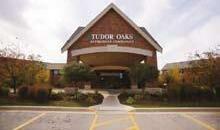

February 2023 MHL 2� assisted living Tudor Oaks Senior Living Community S77 W12929 McShane Drive, Muskego, WI 53150 414-529-0100 www.TudorOaks.net Tudor Oaks Senior Living Community is owned and operated by American Baptist Homes of the Midwest, a not-for-profit provider of senior housing and healthcare since 1930. Call 414-529-0100 for a tour or visit www.TudorOaks.net for a fly-thru video tour of our community. Tudor Oaks : We’re Always Here For You! ■ Assisted Living : Style-smart, charming private apartments ■ Memory Care: Personal suite with private bathroom ■ Rehab Stays Customized therapy plans, private rooms, TV, phone & Wifi included. ■ Wellness Programs ■ Beautiful Campus Setting
Seniors who choose assisted living enjoy an independent lifestyle with assistance

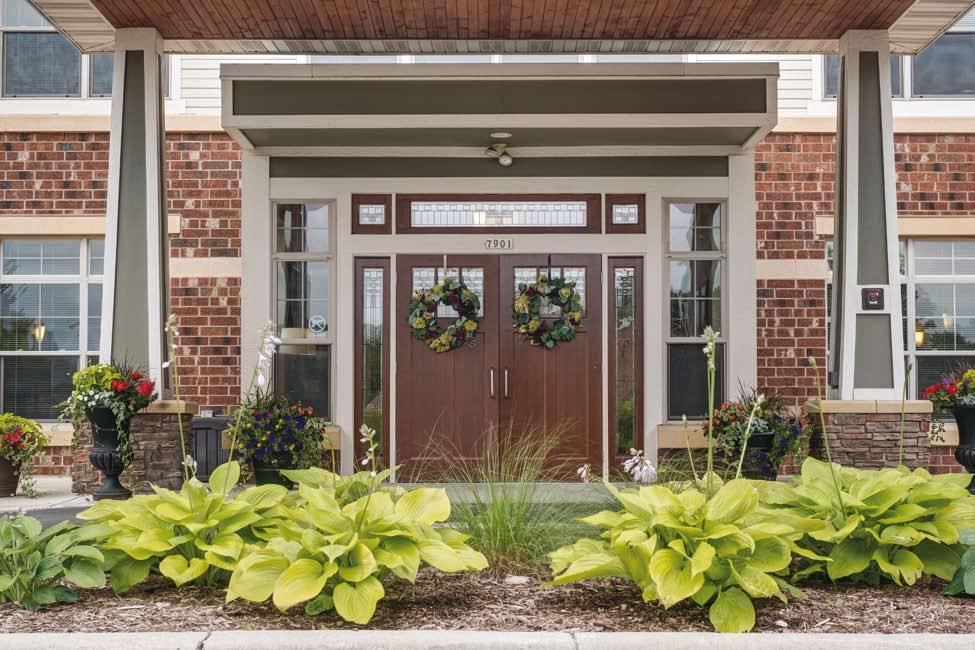




Heritage Elm Grove 800 Wall Street Elm Grove, WI 53122 Heritage West Allis 7901 West National Ave. West Allis, WI 53214 Heritage Monona 111 Owen Road Monona, WI 53716 Heritage Middleton 6234 Maywood Ave. Middleton, WI 53562 Lincoln Village 1330 West Lincoln Ave. Port Washington, WI 53074 Aspire* 825 Cobblestone Lane Kimberly, WI 54136 Heritage Muskego* S64 W13780 Janesville Rd. Muskego, WI 53150 Heritage Deer Creek 3585 147th Street New Berlin, WI 53151 Lexington Heritage 5020 South 107th Street Heritage Lake Country* 2975 Village Square Drive Hartland, WI 53029 Heritage Court N48W14250 W. Hampton Ave. Menomonee Falls, WI 53051 Heritage Court 3515 East Hamilton Ave. Eau Claire, WI 54701 Heritage Waukesha 1831 Meadow Lane Pewaukee, WI 53072 Heritage Oakwood Hills 3606 Damon St. Eau Claire, WI 54701 Put more life into your Lifestyle! • Warm-Water Pools at our premier properties* • On-Site Restaurant Style Dining • Fitness Centers with on-site Therapy Services • Outdoor Grills and Firepits • Housekeeping Services • Entertainment Theaters at our premier properties* • Transportation provided for scheduled events & activities • Spacious Floor Plans We can help you with the Next Step! • Independent • Assisted Living • Memory Care • Pendant Program: Safety, Security & Peace of Mind HERITAGESENIOR.COM *Oshkosh Coming Summer 2021! • 150 Aspire Lane, Oshkosh, WI 54904
If
Don’t Let Your New Year Resolutions Fade
We are now 2 months into the New Year and the question for all of us is how are we doing on our New Year resolutions of “dieting”; “exercising”; “losing weight”…?
Daily life keeps us so busy that we can lose energy and motivation to work out and eat healthier. It happens so gradually that we hardly take notice. We start off strong, then things happen and we promise to get back on track and we may but not as frequently and then not at all and we fall back into old habits. If we reflect over the past few weeks… have you been a little more lax with what you eat? Do you feel a little more discouraged? The further behind you get the harder it is to revamp and start again.
If you are in a slump, this is a perfect time to break free. It may be as hard as it
was at the first of the year, but once you get moving again and taking positive steps, you quickly will get your forward momentum to fitness and health.
Two quick tips to start the positive motion:
Schedule some exercise time into your day today. You don’t need to schedule 60 minutes or 45 minutes, it can be 15 minutes. Just start moving. The biggest predictor of whether you work out tomorrow is whether you work out today. Beginning is always the tough part as we know. Take a walk, walk the stairs at work; do simple calisthenics: squat; push-up(wall push-up); lunges; high knee marches.
Decide on your eating plan: One of the best things you can do to get back on track is draw a line in the sand and don’t step over it. Make healthy choices today, tomorrow and in the future. Eat for energy and vitality not habit or senseless eating.
Taking the first step is hard but the next one is a little easier and the next one and the next one. Make the second half of 2015 the best half!
For those who have been sticking to their plan since January congratulations! You have the wellness bug and it feels good! Have you increased your activity? In our enthusiasm and feeling good energy we may have forgotten a few key points that need to be brought up:

Burnout: If we exercise too much with no breaks, you may experience burnout. This can be a negative to your goals. Burnout leads to loss of motivation and can lead to increase in injury. A sign of heading toward burnout is you begin to have a change in attitude toward working out, instead of enjoying it you start to dread it.
Injury risk: Overtaxing your body with too much exercise and insufficient rest can lead to injuries. During exercise your body naturally experiences stress, strain and micro-injuries. When you rest your body has the chance to heal these micro-injuries, which leads to improved strength and overall endurance. But if the micro-injuries don’t have a chance to heal you potentially are at a higher risk for injury. Moderation is the key and that involves rest and relaxation.
Decrease life performance: An overworked and overtaxed body and mind gets tired and productivity/life performance suffer. We do need to give our bodies and minds time off.
Take time to relax each day -- it is important. If you can take a vacation or time off from work to refresh you mind, body and spirit, do so it is important.
Making New Year’s resolutions is a yearly tradition for many people. Yet, some of us fall short of reaching our goals.
New routines don’t just become habit overnight. A 2009 study found that on average, it takes 66 days to form a new habit. Be patient with yourself. If you have minor setbacks or don’t hit your goal one week, pick it back up the next week. Just keep working at your goal and eventually it can become second nature.
LIVE THE HARWOOD LIFESTYLE — ENJOY RETIREMENT

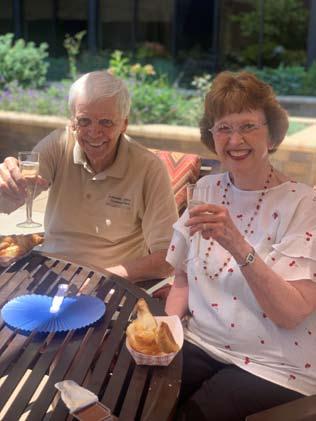

February 2023 MHL 31 Reduced entrance fees on select models! Ask about FREE DINING for a year! 8220 Harwood Avenue, Wauwatosa | harwoodplace.org | 414-256-6814
you are in a slump, this is a perfect time to break free.

How the Aging Brain Affects Thinking
Some changes in thinking are common as people get older. For example, older adults may:
Be slower to find words and recall names
Find they have more problems with multitasking
Experience mild decreases in the ability to pay attention

Participate in Research
Researchers are working to understand normal brain aging, why some people stay cognitively healthy longer than others, and what might protect your brain as you age. Visit the Alzheimers.gov Clinical Trials Finder to learn about clinical trials and studies near you and consider joining a study to be a partner in discovery.
Aging may also bring positive cognitive changes. For example, many studies have shown that older adults have more extensive vocabularies and greater knowledge
of the depth of meaning of words than younger adults. Older adults may also have learned from a lifetime of accumulated knowledge and experiences. Whether and how older adults apply this accumulated knowledge, and how the brain changes as a result, is an area of active exploration by researchers.
Despite the changes in cognition that may come with age, older adults can still do many of the things they have enjoyed their whole lives. Research shows that older adults can still:
Learn new skills
Form new memories
Improve vocabulary and language skills
Changes in the Aging Brain
As a person gets older, changes occur in all parts of the body, including the brain. Certain parts of the brain shrink, especially those important to learning and other complex mental activities.
In certain brain regions, communication between neurons (nerve cells) may not be as effective.
Blood flow in the brain may decrease.
Inflammation, which occurs when the body responds to an injury or disease, may increase.
These changes in the brain can affect mental function, even in healthy older people. For example, some older adults may find that they don’t do as well as younger individuals on complex memory or learning tests. However, if given enough time to learn a new task, they usually perform just as well. Needing that extra time is normal as we age. There is growing evidence that the brain maintains the ability to change and adapt so that people can manage new challenges and tasks as they age.
The Secrets of Cognitive Super Agers
Some people in their 80s, 90s, and beyond defy the common assumption that cognitive decline goes hand in hand with aging. These people, called cognitive super agers, have memory performance comparable to people 20 – 30 years younger. Research is ongoing to understand what sets these people apart to help others prevent (or reverse) age-related cognitive decline.

Talk with your doctor if you’re concerned about changes in your thinking and memory. He or she can help you determine whether the changes in your thinking and memory are normal, or whether it could be something else.
There are things you can do to help maintain your physical health and that may benefit your cognitive health, too. Learn more about cognitive health and take steps to help you stay healthy as you age.
February 2023 MHL 33 congnitive health BE AMONG THE FIRST! JOIN THE LUMINARY CIRCLE. NORTH SHORE’S NEWEST ASSISTED LIVING & MEMORY CARE WELCOME CENTER NOW OPEN! CALL SAMANTHA TO SCHEDULE A VISIT 262�261�7099
OpeningSpring2023
Older adults may also have learned from a lifetime of accumulated knowledge and experiences.
How Your Heart Changes With Age
Heart
People age 65 and older are much more likely than younger people to suffer a heart attack, to have a stroke, or to develop coronary heart disease (commonly called heart disease) and heart failure. Heart disease is also a major cause of disability, limiting the activity and eroding the quality of life of millions of older people.
Aging can cause changes in the heart and blood vessels. For example, as you get older, your heart can’t beat as fast during physical activity or times of stress as it did when you were younger. However, the number of heartbeats per minute (heart rate) at rest does not change significantly with normal aging.
Changes that happen with age may increase a person’s risk of heart disease. A major cause of heart disease is the buildup of fatty deposits in the walls of arteries
over many years. The good news is there are things you can do to delay, lower, or possibly avoid or reverse your risk.

What To Know About High Blood Pressure as You Age, click to open infographic webpage.
The most common aging change is increased stiffness of the large arteries, called arteriosclerosis (ahr-teer-ee-o-skluh-roh-sis), or hardening of the arteries. This causes high blood pressure, or hypertension, which becomes more common as we age.

High blood pressure and other risk factors, including advancing age, increase the risk of developing atherosclerosis (ath-uh-roh-skluh-roh-sis). Because there are several modifiable risk factors for atherosclerosis, it is not necessarily a normal part of aging. Plaque builds up inside the walls of your arteries and, over time, hardens and narrows your arteries, which limits the flow of oxygen-rich blood to your organs and other parts of your body. Oxygen and blood nutrients are supplied to the heart muscle through the coronary arteries. Heart disease develops when plaque builds up in the coronary arteries, reducing blood flow to your heart muscle. Over time, the heart muscle can become weakened and/or damaged, resulting in heart failure. Heart damage can be caused by heart attacks, long-standing hypertension and diabetes, and chronic heavy alcohol use.
Check Your Blood Pressure
As you get older, it’s important for you to have your blood pressure checked regularly, even if you are healthy. This is because aging changes in your arteries can lead to hypertension. You may feel fine but, if not treated, high blood pressure could lead to stroke and problems with your heart, eyes, brain, and kidneys. To manage high blood pressure, exercise, dietary changes, and reducing your salt intake can help, but as aging changes in the arteries often cause high blood pressure in older age, medication is often necessary. It is not uncommon to need more than one medication to control your blood pressure.
Age can cause other changes to the heart. For example:
There are age-related changes in the electrical system that can lead to arrhythmias—a rapid, slowed, or irregular heartbeat—and/or the need for a pacemaker. Valves—the one-way, door-like parts that open and close to control blood flow between the chambers of your heart—may become thicker and stiffer. Stiffer valves can limit the flow of blood out of the heart and become leaky, both of which can cause fluid to build up in the lungs or in the body (legs, feet, and abdomen).
The chambers of your heart may increase in size. The heart wall thickens, so the amount of blood that a chamber can hold may decrease despite the increased overall
34 MHL February 2023
heart health
disease is also a major cause of disability, limiting the activity and eroding the quality of life of millions of older people.
heart size. The heart may fill more slowly. Long-standing hypertension is the main cause of increased thickness of the heart wall, which can increase the risk of atrial fibrillation, a common heart rhythm problem in older people.
With increasing age, people become more sensitive to salt, which may cause an increase in blood pressure and/or ankle or foot swelling (edema).
Other factors, such as thyroid disease or chemotherapy, may also weaken the heart muscle. Things you can’t control, like your family history, might increase your risk of heart disease. But, leading a heart-healthy lifestyle might help you avoid or delay serious illness.
What Is Heart Disease?
Heart disease is caused by atherosclerosis (ath-uh-roh-skluh-roh-sis), which is the buildup of fatty deposits, or plaques, in the walls of the coronary arteries over many years. The coronary arteries surround the outside of the heart and supply blood nutrients and oxygen to the heart muscle. When plaque builds up inside the arteries, there is less space for blood to flow normally and deliver oxygen to the heart. If the flow of blood to your heart is reduced by plaque buildup or is blocked if a plaque suddenly ruptures, it can cause angina (chest pain or discomfort) or a heart attack. When the heart muscle does not get enough oxygen and blood nutrients, the heart muscle cells will die (heart attack) and weaken the heart, diminishing its ability to pump blood to the rest of the body.
Signs of Heart Disease
Early heart disease often doesn’t have symptoms or the symptoms may be barely noticeable. That’s why regular checkups with your doctor are important.
Contact your doctor right away if you feel any chest pain, pressure, or discomfort. However, chest pain is a less common sign of heart disease as it progresses, so be aware of other symptoms. Tell your doctor if you have:
Pain, numbness, and/or tingling in the shoulders, arms, neck, jaw, or back
Shortness of breath when active, at rest, or while lying flat
Chest pain during physical activity that gets better when you rest
Lightheadedness
Dizziness
Confusion
Headaches
Cold sweats
Nausea/vomiting
Tiredness or fatigue
Swelling in the ankles, feet, legs, stomach, and/or neck
Reduced ability to exercise or be physically active


Problems doing your normal activities
Problems with arrhythmia are much more common in older adults than younger people. Arrhythmia needs to be treated. See a doctor if you feel a fluttering in your chest or have the feeling that your heart is skipping a beat or beating too hard, especially if you are weaker than usual, dizzy, tired, or get short of breath when active.

If you have any signs of heart disease, your doctor may send you to a cardiologist, a doctor who specializes in the heart.
Medical Tests for Heart Disease
Your doctor will check your blood pressure and do a fasting blood test to check your cholesterol, a type of fatty substance that can contribute to plaques in your arteries. He or she might also do a blood test to check the levels of proteins that are markers of inflammation in the body and suggest you have an electrocardiogram (ECG or EKG). This test looks at electrical activity in your heart. A chest x-ray will show whether your heart is enlarged or your lungs have fluid in them; both can be signs of heart failure. The doctor might do a blood test for brain natriuretic peptide (BNP), a hormone that increases in heart failure. If the cardiologist needs to determine your heart or valve function, he or she may order an echocardiogram, a painless test which uses sound waves to produce images of your heart in motion.
To learn more about heart disease, visit the National Heart, Lung, and Blood Institute.
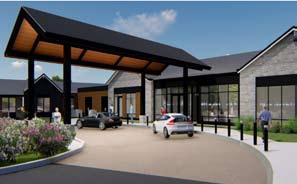
What Can I Do to Prevent Heart Disease?
There are many steps you can take to keep your heart healthy.
Try to be more physically active. Talk with your doctor about the type of activities that would be best for you. If possible, aim to get at least 150 minutes of physical activity each week. Every day is best. It doesn’t have to be done all at once.
Two older women walking in a park for exerciseStart by doing activities you enjoy—brisk walking, dancing, bowling, bicycling, or gardening, for example. Avoid spending hours every day sitting.
If you smoke, quit. Smoking is the leading cause of preventable death. Smoking adds to the damage to artery walls. It’s never too late to get some benefit from quitting smoking. Quitting, even in later life, can lower your risk of heart disease, stroke, and cancer over time.
Follow a heart-healthy diet. Choose foods that are low in saturated fats, added sugars, and salt. As we get older, we become more sensitive to salt, which can cause swelling in the legs and feet. Eat plenty of fruits, vegetables, and foods high in fiber, like those made from whole grains. Get more information on healthy eating from NIA. You also can find information on the Dietary Approaches to Stop Hypertension Heart>>page 43
February 2023 MHL 3�
7 Five-Minute Exercises for Seniors


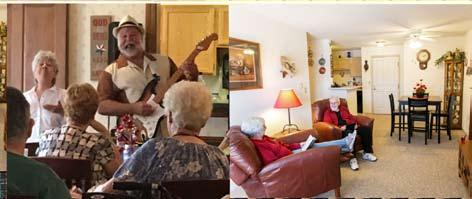


Fit some fitness into your day with these movements.
These five-minute exercises for seniors can be done at home whenever you have a little extra time.
The idea of starting a workout routine can be intimidating. Some days, it’s tough just to find enough time to dedicate to exercise. Fortunately, you don’t have to add hours to your schedule! It can be much easier (physically and psychologically) to do bite-sized workouts whenever you have a few extra minutes
In honor of Active Aging Week, which runs October 3-9, we’re highlighting some great five-minute exercises for seniors and how to easily fit them into your day:


Even though these exercises are short and mostly low-impact, it’s still a good idea to check in with your doctor before trying any new type of physical activity.
Let’s check out these five-minute exercises for seniors!
Commercial-break bodyweight exercises

Looking for a way to make TV watching healthy? Turn commercial breaks into exercise opportunities! You can do push-ups (including knee pushups, wall push-ups, or couch push-ups), sit-ups or crunches, squats, or planks. These are all exercises that allow you to do as many or as few as you have the time and energy for.
Walking during phone calls
When you take a call on your mobile or cordless phone, use it as a reminder to start strolling! You don’t have to walk so quickly that you get out of breath and it’s hard to talk, of course. Just walking between rooms or down the sidewalk gets your blood moving. If you look for any possible opportunity to walk more each day, you’ll start noticing the health benefits of walking.
Five-minute morning yoga




Mornings and yoga go together like peanut butter and jelly! Find a few simple stretches that make your body feel
amazing, and take five minutes after you wake up to start your day on the right foot (maybe you’ll literally be balancing on your right foot!). Check out the benefits of yoga and some yoga moves that promote better hearing.
Hallway lunges
A nice long hallway is a perfect spot to do some lunge laps! There are a few different variations of the walking lunge, but the basic idea is pretty consistent. You take wide steps and lower your body with each one, which simultaneously stretches out the leg in the back and engages the muscles in the front leg. If you like, you can carry dumbbells to engage the arms as well.
Doing laps around the house
Here’s another way to increase your walking! If you have five minutes and want to move a little, do a couple of power-walking laps of your house. On nice days, you can do it outside and maybe take a lap around the block. For an interior challenge, make it a goal to pass each room of your house as many times as you can in five minutes! Just remain aware of tripping hazards while you’re at it.
Quick dumbbell exercises
Dumbbell workouts are one of our top ways to stay active indoors. It’s easy to just grab them when you have a few minutes and feel like pumping some iron. Try a five-minute dumbbell routine like this, incorporating a variety of different exercises to engage all your muscles.
Jumping rope
Jump ropes aren’t just for kids anymore! If you have good balance and your doctor clears you for jumping exercises, five minutes is more than enough to get your heart rate pumping. Here’s a workout video guiding beginners through a five-minute jump rope workout.
Looking for more ways to add extra movement to your lifestyle? Check out these exercises that improve posture and some ways to make exercise fun!
3� MHL February 2023 BRENWOOD PARK 9501 W. Loomis Rd. | Franklin WI 53132 Heat and hot water is included in your r ent, along with many fun and unique acti vities, On-site management of fice and 24/7 maintenance. Call Us To Schedule A Tour ASAP! 414-427-8499 Brenwood Park Senior Living
fitness
5 Ways for Seniors to Keep Their Bones Stronger
Keeping bones as strong as possible is vitally important for seniors, as illnesses like osteoporosis tend to occur in many older people. There are a variety of things that seniors can do to keep their bones healthy. Let’s look at 5 simple ways to boost bone health.
Vitamins & Supplements
Sometimes, it’s difficult for seniors to get all of the vitamins and minerals they need from food alone. There are over the counter supplements available that can help strengthen bones such as Omega3 fatty acids, Vitamin D and, of course, Calcium.
Because many older people take a variety of medications, it is important for them to check with their doctor before adding any vitamins or supplements to their daily routine as adverse reactions sometimes do occur.
Keeping Physically Active
Exercising is a great way to keep bones as healthy and strong as possible. Because seniors have varying levels of physical capabilities, it’s very important to choose activities that are appropriate.

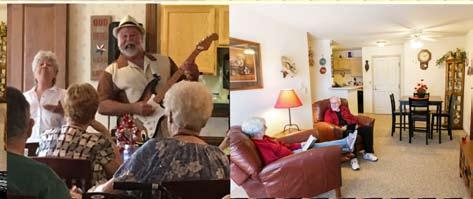
Whether it be walking, yoga, light weight lifting, or mild arm and leg stretches, regular movement can help bones become denser and also keep muscles toned. If a senior is not sure what type of exercise is best for them, they can seek guidance from their physician or a physical therapist.
Maintaining a Healthy Diet
For so many reasons, it is crucial that seniors eat a balanced and healthy diet each day. With respect to bone health, there are many foods that can help build strength. Bone friendly food options include cereal and milk, yogurt, soy prod-
ucts, eggs, cheese, broccoli, and fish.
These types of foods are high in Calcium, which is the foundation of good bone health. Maintaining an adequate amount of Calcium can help prevent osteoporosis, which leads to bones becoming become brittle and weak.
Find a Community in your area
No matter your need, we have the right community for you. Get started finding the perfect new home for you or your loved one today!
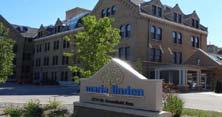
Find a Community







Optimize the Absorption of CalciumIn addition to getting an adequate amount of Calcium from food or supplements, seniors must also do all they can to ensure that their bodies actually absorb as much of it as possible. Vitamin D plays a critical role in the body’s ability to absorb Calcium. In fact, without it, Calcium absorption is reduced by as much as 85%.
There are a number of foods that are rich in Vitamin D, such as cod liver oil, fortified orange juice, dairy products, tuna fish, and salmon. Sitting in the sun for about 20 minutes per day can also help increase the amount of Vitamin D in the system.
This is why it is often referred to as the “Sunshine Vitamin.”

Limit Sodium & Caffeine Use
Reducing the amount of salt (sodium) that a person takes in has been proven to be beneficial in the area of bone health. Foods high in salt have been shown to inhibit the body’s ability to absorb Calcium.
Similarly, beverages that contain excessive amounts of caffeine can also reduce Calcium absorption levels.
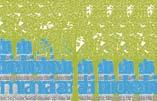



February 2023 MHL 37
Simple ways to boost bone health
bone health
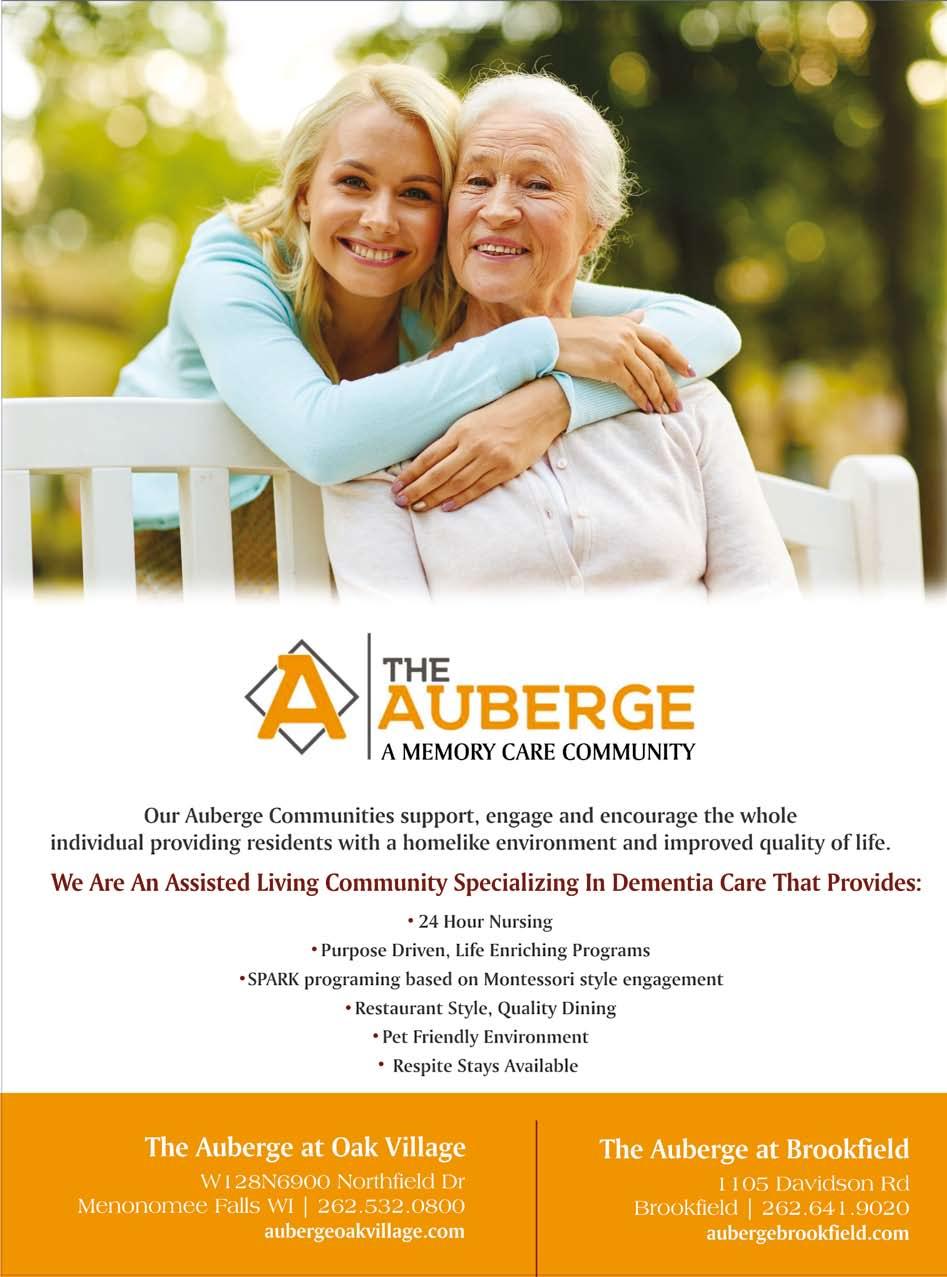
Having a pet can help seniors’ overall well-being

5 Benefits of Having a Pet Companion for Seniors
This article will explore five of the top reasons why pet ownership can benefit seniors physically, mentally, emotionally, spiritually, socially, and more.

Having a pet can help seniors’ overall well-being.
Benefits include relief from loneliness to more significant socialization opportunities and physical aspects like increased exercise.
Whether you have a pet in mind already or are curious about getting your loved one an animal, this article will explore five of the top reasons why pet ownership can benefit seniors physically, mentally, emotionally, spiritually, socially, and more.
Physical Benefits
Pets improve the quality of life for seniors, especially their physical health. Many older people report that when taking their dog for a walk, they enjoy their routine exercise more. Regular physical activity in seniors has been proven to improve mobility, decrease blood pressure, as well as cholesterol, and triglyceride (a certain type of fat found in the blood stream) levels.
Mental Benefits
Increased physical activity and time outside with a pet can help maintain cognitive function and mental awareness. Additionally, the consistent daily routine of feeding, walking, and caring for a pet can help give structure and purpose to a senior’s day.
Emotional and Spiritual Benefits











One of the most valuable psychological benefits of having a pet for older people is increased self-esteem. Caring for an animal can help a senior feel loved and needed. Pets can also make people
Independent Carefree Senior Living at its Best!



happier and less lonely, with a constant companion to enjoy.
Find a Community in your area
No matter your need, we have the right community for you. Get started finding the perfect new home for you or your loved one today!
Find a Community Socialization Opportunity for

























Seniors

Beyond physical and mental benefits, pets can provide seniors opportunities to socialize. Animals are often popular topics of conversation and a great way to meet new people and interact with others. For those who often feel isolated, increased socialization time can be invaluable in reducing stress and improving mood.
Safety Benefits of Pets for Seniors


There are also safety benefits to having a pet in the home. Dogs have been known to deter burglars with their barking, and for seniors living alone, an animal can bring more peace of mind to their lives.
Bringing Purpose & Meaning to Seniors’ Lives

Owning a pet can be great overall for seniors’ health, providing a higher level of support and love, especially when an older person is struggling with depression, loneliness, or other emotional health issues.
The compassionate and friendly staff at Frontier Management have helped many families find a senior community that meets all of their loved one’s needs on a physical, emotional and spiritual level. Many communities are even pet friendly! If you would like to learn more about our services, please contact us today.
how will you spend it?
Oak Park Place offers Assisted Living and Memory Care with all the features you expect in a place to call home.
Individualized services, life-enhancing amenities, and compassionate, professional staff are the foundation of all we do.
Choose from a range of spacious studio and one-bedroom apartments with assistance available from staff 24 hours a day, every day.
Independence when you want it, assistance when you need it. Oak Park Place.
We’ll help you every step of the way. Call



February 2023 MHL 3� 1621 Rivers Bend, Wauwatosa, WI 53226 www.OakParkPlace.com/Wauwatosa
414-292-0400 or email wauwatosasales@oakparkplace.com.
spacious 1, 2 and 2 bedroom plus den apartment homes start at only $839 per month with a 90% refundable entrance fee required. Call 414-525-5500 to schedule your personal tour of STEEPLE VIEW! See what a gift our Christian community is for your independent, maintenance-free and worry-free lifestyle! 414-525-5500 OPEN HOUSE: Feb. 26, noon 2:00 p.m. or March 10, 2 4:00 p.m. Residents, Daryl and Bonnie 12455 W. Janesville Road, Muskego | steepleview.org | 414-525-5500
Our
would you seek?
I didn’t notice Dad repeating himself so much the last time I was here. Do you remember when it started?
knowig the signs and when to seek help
If you do not see an aging friend or relative often, changes in his or her health may seem dramatic. In contrast, the primary caregiver might not notice such changes or realize that more help, medical treatment, or supervision is needed. Or, the primary caregiver might not want to accept the fact that the health of his or her spouse or parent is failing. Sometimes a geriatric care manager or other professional is the first to notice changes.
The decision about whether your parents should move is often tricky and emotional. Each family will have its own reasons for wanting (or not wanting) to take such a step.
You might have to have a serious talk with your family members. One family may decide a move is right because the parents can no longer manage the home. For another family, the need for hands-on care in a long-term care facility motivates a change.
For families dealing with Alzheimer’s disease or another dementia, it can be easier to cover for the person—doing things for him or her, filling in information in conversations, and so on—than to acknowledge what is happening.
As a caregiver, you can provide support by helping an aging friend or relative get the care they need.
In the case of long-distance caregivers, the notion of moving can seem like a solution to the problem of not being close enough to help. For some caregivers, moving a sick or aging parent to their own home or community can be a viable alternative. Some families decide to have an adult child move back to the parent’s home to become the primary caregiver.
A few good questions to help you start the conversation with the primary caregiver are:
If you thought there might be a change in Aunt Joan’s condition, whose opinion
Keep in mind that leaving a home, community, and familiar medical care can be very disruptive and difficult for the older parent, especially if they are not enthusiastic about the change. You might first want to explore what services are available in
For 135 years and counting, Eastcastle Place offers a full continuum of care in Milwaukee’s vibrant East Side. Our 5 Star rated facilities offer high quality care and staff to resident ratios above industry standards and continues to be a dynamic retirement community. As a member of Leading Age Echelon Program , Eastcastle Place is passionate about providing a high level of excellence in care and service to our residents.
Eastcastle Place has specially designed memory care support where you’ll find advanced therapies and specialized care programming for those with a memory related diagnosis.
S A
Private Suites in a Secure Environment

Three chef prepared meals per day
24 Hour emergency response system
All Utilities (except phone)
Cable TV and Wi Fi
Daily housekeeping & laundry services

Scheduled transportation
On site activities and events designed toward memory loss
your parents’ community to help them in their home—including home health care, housekeeping, personal care, and transportation services.
Some changes may not be what you think. Occasional forgetfulness does not necessarily indicate dementia. Before you raise the issue of what needs to be done, talk to your parent and the primary caregiver about your concerns.

Try not to sound critical when you raise the subject. Instead, mention your particular worry, for example, “Mom, it looks like you don’t have much food in the house—are you having trouble getting to the store?” and explain why you are asking. Listen to what the primary caregiver says about the situation and whether he or she believes there are problems.
Older adults and their families have some options when it comes to deciding where to live, but these choices can be limited by factors such as illness, ability to perform activities of daily living (for example, eating, bathing, using the toilet, dressing, walking, and moving from bed to chair), financial resources, and personal preferences.
Aging in place infographic icon. Click through for full text. Read and share this infographic to get tips on how to make home safe and accessible while aging in place.
Making a decision that is best for your parent—and making that decision with your parent—can be difficult. Try to learn as much as you can about possible housing options.
Discuss what you think could be done. For example, you could ask:
What Is Assisted Living?

Would you like me to arrange to have groceries delivered on a regular basis?
Do we need to get a second opinion about the diagnosis?
Can you follow the medication schedule?
Assisted living is for people who need help with daily care, but not as much help as a nursing home provides. Assisted living facilities range in size from as few as 25 residents to 120 or more. Typically, a few “levels of care” are offered, with residents paying more for higher levels of care.
Would you like some help with housework?
Try to follow your suggestions with practical help, and give specific examples of what you can do. For example, you might arrange to have a personal or home health aide come in once a week. You might schedule doctors’ appointments or arrange for transportation.
Assisted living residents usually live in their own apartments or rooms and share common areas. They have access to many services, including up to three meals a day; assistance with personal care; help with medications, housekeeping, and laundry; 24-hour supervision, security, and on-site staff; and social and recreational activities. Exact arrangements vary from state to state.
Older adults, or those with serious illness, can choose to:
Stay in their own home or move to a smaller one
In some cases, you may have to be forceful, especially if you feel that the situation is unhealthy or unsafe. Do not leave a frail adult at risk. If you have to act against the wishes of your parent or the primary caregiver, be direct and explain what you are going to do. Discuss your plan, and say why you are taking action.
Move to an assisted-living facility


Move to a long-term care facility
Move in with a family member
There are no specific rules for when someone needs full-time care. A doctor can do tests to determine if their cognitive impairment has gotten worse. If you or your loved one is already in assisted living or a nursing home, staff there may notice signs that they need a higher level of care. And certain changes in their behavior, appearance, and environment can provide clues
Some families find a conference call is a good way to talk together about the pros and cons of each option. The goal of this call is to come up with a plan that works for everyone, especially your parent. If the decision involves a move for your mom or dad, you could, even from a distance, offer to arrange tours of some places for their consideration.
How do I know when someone needs assisted living?
Memory care facilities provide specialized care for people with Alzheimer’s disease and dementia. They can be part of a larger community that also has independent and assisted living areas, or they can be a stand-alone facility. Memory care facilities assist residents with activities of daily living (ADLs), housekeeping, transportation, meals, and recreational activities.
The best memory care facilities offer 24-hour care and have licensed nurses to address residents’ needs and assist with medications; they also have an abundance of daily activities to partake in and calm and inviting common areas.
In general, it’s best to start with a physician’s assessment. Depending on your situation, or that of your loved one, you can find the right level of assistance. When help with daily tasks is needed — taking medicines, bathing, dressing, meals, transportation and housekeeping — an assisted living residence can be the answer. Trained professionals provide this assistance while helping preserve an individual’s independence.
east catsle
Our Heartfelt Connections Program provided by our Skilled Care Specialists work closely with residents, families and staff members to develop the best care plan in a supportive, purposeful environment.

This builds a sense of comfort through nurturing mind, body and spirit with stimulating activities and personal guidance each day.
Alzheimer’s and Dementia Care
It’s our privilege to support your loved one.
40 MHL JANUARY 2021
2505 East Bradford Avenue · Milwaukee, WI 53211 · 414 963 8480 · www.eastcastleplace.com
memory care
40 MHL February 2023
Breaking Generational Patterns
 By Robin Stevens Payes
By Robin Stevens Payes
As the war in Ukraine broke out last February, I suddenly felt the energetic pull of family history. My Ukrainian-Jewish grandparents had escaped murderous pogroms against Jews to come to a land where they could live freely. But they carried with them the trauma of growing up poor, persecuted and under constant threat of oppression. Looking closely at my grandparents’ story, I could see the ways that their fear had been passed down to my mother. While they never discussed stories of the “old country” or the dangers they escaped, my mother had learned this survival lesson: success meant fitting in.
I began seeing the ways in which I had inherited it, too. I grew up walking on eggshells, worried that my mother might sulk if I didn’t live up to her expectations. When my brother chose his own path, my mother renounced him. Meanwhile, I shaped my life to be the child who would make her proud.
In grappling with my own multi-generational trauma, I began asking myself, how do we examine these negative patterns and break them?
Change starts in the genes
With epigenetics, researchers can now determine how changes in DNA are passed down after traumatic events— meaning trauma can start long before conception or birth. If the mother-baby bond is broken and a mother is unable to care for her child, the ability of young children to attach securely to a caretaker suffers. It might lead to a lifetime of insecure relationships affecting emotional development. Chronic stress in-utero can also result in impaired physical health. Even cultural and social conditioning in infants and children can cause epigenetic changes similar to the traumatic effects of violence and scarcity.


There is some good news: with awareness and intention, these impacts can be reversed. Nurturing positive emotional qualities such as love, gratitude, and empathy can offer an antidote. There are therapeutic techniques that can help an individual work through generational trauma. This means that, literally, changing your story can change your life.


Being aware of the problem is among the first steps to healing; to change your story, you must first know your story.
Re-storying: Healing the past to get to a healthier future
As we see trauma and violence playing out on a global scale and the damaging patterns of generational conflict, these same stories are reflected in popular culture. Social media is abuzz with #generationaltrauma stories. Tracing the family tree through Ancestry, or oral history programs like Story Corps, give us new ways to find and share family stories.
February 2023 MHL 41
Health Insurance Life Insurance Annuities LongTerm Care Insurance Auto Homeowners Immediate SR22 Filings Free Quotes 7421 W. Becher St. West Allis, WI We are not limited to representing one company, so we can give you unbiased advice. 414-545-7878 1-800-924-4061 www.AlliedSeniorServices.com Be Confident in Your Coverage.
ModernHealthandLiving.com get even more health info Generations>>page 47
Good Hydration Linked To Healthy Aging

Adults who stay well-hydrated appear to be healthier, develop fewer chronic conditions, such as heart and lung disease, and live longer than those who may not get sufficient fluids, according to a National Institutes of Health study published in eBioMedicine(link is external).
Using health data gathered from 11,255 adults over a 30-year period, researchers analyzed links between serum sodium levels – which go up when fluid intake goes down – and various indicators of health. They found that adults with serum sodium levels at the higher end of a normal range were more likely to develop chronic conditions and show signs of advanced biological aging than those with serum sodium levels in the medium ranges. Adults with higher levels were also more likely to die at a younger age.
“The results suggest that proper hydration may slow down aging and prolong a disease-free life,” said Natalia Dmitrieva, Ph.D., a study author and researcher in the Laboratory of Cardiovascular Regenerative Medicine at the National Heart, Lung, and Blood Institute (NHLBI), part of NIH.
The study expands on research the scientists published in March 2022, which found links between higher ranges of normal serum sodium levels and increased risks for heart failure. Both findings came from the Atherosclerosis Risk in Communities (ARIC) study, which includes sub-studies involving thousands of Black and white adults from throughout the United States. The first ARIC sub-study started in 1987 and has helped researchers better understand risk factors for heart disease, while shaping clinical guidelines for its treatment and prevention.
For this latest analysis, researchers assessed information study participants shared during five medical visits – the first two when they were in their 50s, and the last when they were between ages 70-90. To allow for a fair comparison between how hydration correlated with health outcomes, researchers excluded adults who had high levels of serum sodium at baseline check-ins or with underlying conditions, like obesity, that could affect serum sodium levels.
They then evaluated how serum sodium levels correlated with biological aging,


















which was assessed through 15 health markers. This included factors, such as systolic blood pressure, cholesterol, and blood sugar, which provided insight about how well each person’s cardiovascular, respiratory, metabolic, renal, and immune system was functioning. They also adjusted for factors, like age, race, biological sex, smoking status, and hypertension.
They found that adults with higher levels of normal serum sodium – with normal ranges falling between 135-146 milliequivalents per liter (mEq/L) – were more likely to show signs of faster biological aging. This was based on indictors like metabolic and cardiovascular health, lung function, and inflammation. For example, adults with serum sodium levels above 142 mEq/L had a 10-15% associated increased odds of being biologically older than their chronological age compared to ranges between 137-142 mEq/L, while levels above 144 mEq/L correlated with a 50% increase. Likewise, levels of 144.5-146 mEq/L were associated with a 21% increased risk of premature death compared to ranges between 137-142 mEq/L.
Similarly, adults with serum sodium levels above 142 mEq/L had up to a 64% increased associated risk for developing chronic diseases like heart failure, stroke, atrial fibrillation and peripheral artery disease, as well as chronic lung disease, diabetes, and dementia. Conversely, adults with serum sodium levels between 138-140 mEq/L had the lowest risk of developing chronic disease.
The findings don’t prove a causal effect, the researchers noted. Randomized, controlled trials are necessary to determine if optimal hydration can promote healthy aging, prevent disease, and lead to a longer life. However, the associations can still inform clinical practice and guide personal health behavior.
“People whose serum sodium is 142 mEq/L or higher would benefit from evaluation of their fluid intake,” Dmitrieva said. She noted that most people can safely increase their fluid intake to meet recommended levels, which can be done with water as well as other fluids, like juices, or vegetables and fruits with a high water content. The National Academies of Medicine(link is external), for example, suggest that most women consume around 6-9 cups (1.5-2.2 liters) of fluids daily and for men, 8-12 cups (2-3 liters).
Others may need medical guidance due to underlying health conditions. “The goal is to ensure patients are taking in enough fluids, while assessing factors, like medications, that may lead to fluid loss,” said Manfred Boehm, M.D., a study author and director of the Laboratory of Cardiovascular Regenerative Medicine. “Doctors may also need to defer to a patient’s current treatment plan, such as limiting fluid intake for heart failure.”
The authors also cited research that finds about half of people worldwide don’t meet recommendations for daily total water(link is external) intake, which often starts at 6 cups (1.5 liters).
“On the global level, this can have a big impact,” Dmitrieva said. “Decreased body water content is the most common factor that increases serum sodium, which is why the results suggest that staying well hydrated may slow down the aging process and prevent or delay chronic disease.”
42 MHL February 2023
TEROVASENIORLIVING
262-478-1500
COM ORLIVING
healthy aging
262-478-1500 TEROVASENIORLIVING COM ORLIVING
hydration may slow down aging and prolong a disease-free life
you can maintain a healthy weight include limiting portion size and being physically active. Learn more about how to maintain a healthy weight from NIA.
Keep your diabetes, high blood pressure, and/or high cholesterol under control. Follow your doctor’s advice to manage these conditions, and take medications as directed.
Cholesterol
High blood cholesterol levels can lead to plaque buildup in your arteries. Your doctor can check the level of cholesterol in your blood with a blood test. You must be fasting overnight or for 8 hours before this blood test. This will tell you your overall or total cholesterol level as well as LDL (“bad” cholesterol), HDL (“healthy” cholesterol), and triglycerides (another type of fat in the blood that puts you at risk for heart problems).
Don’t drink a lot of alcohol. Men should not have more than two drinks a day and women only one. One drink is equal to:
One 12-ounce can or bottle of regular beer, ale, or wine cooler
One 8- or 9-ounce can or bottle of malt liquor
One 5-ounce glass of red or white wine
One 1.5-ounce shot glass of distilled spirits like gin, rum, tequila, vodka, or whiskey
Manage stress.
Learn how to manage stress, relax, and cope with problems to improve physical and emotional health. Consider activities such as a stress management program, meditation, physical activity, and talking things out with friends or family. To learn more about stress management techniques, visit the National Center for Complementary and Integrative Health.
Questions to Ask Your Doctor
Ask your doctor questions to learn more about your risk for heart disease and what to do about it. Learn what you can do if you are at increased risk or already have a heart problem.
What is my risk for heart disease?
What is my blood pressure?
What are my cholesterol numbers? (These include total cholesterol, LDL, HDL, and triglycerides.) Make sure your doctor has checked a fasting blood sample to determine your cholesterol levels.
Do I need to lose weight for my health?

What is my blood sugar level, and does it mean that I’m at risk for diabetes?
What other screening tests do I need to tell me if I’m at risk for heart disease and how to lower my risk?
What can you do to help me quit smoking?


How much physical activity do I need to help protect my heart?
What’s a heart-healthy eating plan for me?

How can I tell if I’m having a heart attack? If I think I’m having one, what should I do?

Warrior<<page 1�
This exercise also works the stabilization muscles in your body including transverse abdominal, erector spinal, gluteals, deltoids and hamstrings, which not only helps with the execution for movements used in Martial Arts, but also helps with daily living activities.
Lie on your stomach on the floor with your arms stretched out and legs stretched out behind. Keeping your head relaxed and spine neutral, raise your arms and legs a few inches off the ground, while contracting your core muscles to stabilize your spine. Gently lower yourself back to the starting position and repeat. Recommended 8-15 reps.
Another factor in strength building is making sure one’s inner self is healthy by doing what you enjoy doing. Whether it’s taking a walk, reading your favorite book, surrounding yourself in nature, cooking.
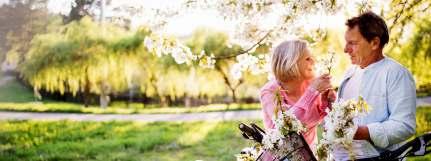
“I do my weekly hikes because nature always brings me back to my core. It reminds me of all the positives in life, and always makes me appreciate life. I also do my stretches at the end of the day. This is my daily meditation where I wind down, stretch out my body to prepare for another day with a positive mindset,” concludes Yui.
OneFirelight brings a mind, body, spirit modality to the fitness space by combining the restorative effects of yoga practice, strength building of cardio/kickboxing, healing of sound meditation, and joyfulness of dance, OneFirelight results in calming the mind, strengthening the body, and uplifting the spirit. The unique and oneof-a-kind platform offerings are carefully curated to promote expressions of love, peace and unity.
While some health factors are beyond your control, there are a number of things that women can do to improve health and fitness.
Try OneFirelight with a 3-day free guest pass at www.onefirelight.com.
February 2023 MHL 43 Convenient Downtown Location Free Parking- secure Entr y System Beauty Salon-Community Room Social Activities QUALITY SUBSIDIZED SENIOR HOUSING 262-544-9757 or 800-944-4866 ext. 1122
Heart<<page 3�
Fitness Predicts Longevity in Older Adults



The key to healthy aging is being physically active, regardless of your weight.
Being physically fit after age 60 helps you live longer, regardless of your body’s fat content, according to a new study.
Although earlier research had suggested that obesity and low physical fitness each can increase the risk of dying during middle age, it was unclear whether this was also true in later years. In a new report from an ongoing study, Dr. Xuemei Sui of the University of South Carolina and her colleagues examined the links between fitness, fatness and mortality in older adults.


The scientists looked at more than 2,600 men and women, age 60 or older, who were participating in the Aerobics Center Longitudinal Study, funded by NIH’s National Institute on Aging (NIA) and National Heart, Lung and Blood Institute (NHLBI). Participants walked on a treadmill to determine their fitness levels. Their fat levels, or adiposity, were assessed by measuring their waist circumference, percent body fat and body mass index (a ratio of weight to height). The results were reported in the December 5, 2007, issue of the Journal of the American Medical Association.
During an average follow-up period of 12 years, 450 of the participants died. They were generally older, had lower fitness levels and had more cardiovascular risk factors, such as high blood pressure, high cholesterol and diabetes, than survivors. The percent of body fat did not appear to be related to the risk of dying. However, greater fitness, lower body mass index and lower waist circumference each reduced the risk of death.

The researchers grouped the participants into 5 categories based on their fitness levels. The least-fit group had a death rate 4 times higher than the fittest. Even those in the low-fitness group fared much better than the least-fit; the least-fit participants were twice as likely to die as those in the low-fitness group. In most cases, the death rates for those with higher fitness levels were less than half of the rates for those who were least fit but weighed similar amounts.
The researchers say their findings suggest that you don’t need to be thin to benefit from regular physical activity. Regular activity — like brisk walking for at least 30 minutes most days of the week — will keep most older adults out of the lowest fitness category and possibly help prolong their lives. The key to healthy aging is being physically active, regardless of your weight.



44 MHL February 2023
senior
fitness
als, especially those who take prescription medications and/or use over-the-counter drugs, dietary supplements and herbal medicines. High-dose nutrients can interfere with medications and interact with other nutrients to decrease their absorption into the body. This can ultimately affect a person’s nutritional and health status. For example, because the high zinc concentration in the AREDS formulation could cause copper deficiency anemia, copper had to be added. People being treated for chronic diseases such as cancer, heart disease, and diabetes should not take high-dose nutrients without consulting their doctors. Generally, self-medication with high doses of vitamins and minerals (such as those in the AREDS study) is not recommended. Anyone planning to take the AREDS formulation, should discuss it first with their primary care doctor and/or eye care specialist,” says David Scheidt, a medical optometrist who provides comprehensive eye services, including pre- and post-operative care of surgical patients.
Risk Factors for AMD
Raciti recommends scheduling annual eye exams and being aware of the following risk factors for AMD:
• Age – #1 risk factor. AMD affects 33% of adults 75+.
• Smoking – increases risk 2-5 times.
• Family history – raises risk by 20-70 percent.
• Gender – being female, possibly because live longer.
• Race – Caucasians are at greater risk.
• A diet high in fat, cholesterol and sugar, and/or low in nutrients and antioxidants
• Prolonged sun/UV-light exposure
• Obesity – raises risk 2.5 times.
• High blood pressure
• Light eye color – less protection from UV rays.
• Inactivity – can cause inadequate oxygen supply to and eventual death of cells in the macula.

Free Booklets & Information
The physicians quoted above are partners at Eye Care Specialists, a leading ophthalmology practice that provides medical, surgical and laser care to more than 200,000 Wisconsinites. They are dedicated to the diagnosis and treatment of cataracts, glaucoma, diabetic eye disease, and macular degeneration (AMD) and have written their own series of booklets on these conditions. Call 414-321-7520 ext. 217 for FREE copies or visit www.eyecarespecialists.net to read detailed explanations of common eye concerns and order free educational materials. Thorough eye examinations (usually covered by insurance or Medicare) and second opinions are available at their offices on 7th & Wisconsin Avenue, Mayfair Road across from the mall, or 102nd & National Avenue.
Gut<<page 17
Sticking with a set schedule just might put your bowel habits on a natural timer. But if you’re having an irregular or off day, don’t head to the toilet just to sit there and hope something happens.
“Sitting on the toilet for too long, especially looking at your phone, can predispose you to developing hemorrhoids. Straining before you’re ready to have a bowel movement can lead to hemorrhoids too,” Dr. Sreenivasan says.
A better, more comfortable bet? Only head to the bathroom when you get the urge to go, even it means skipping your usual time. And if it takes more than five minutes to have a bowel movement, you’re sitting for too long. “Try getting up and doing something else and come back when you need to,” recommends Dr. Sreenivasan. This article origanally appeared on livestrong.com.
Plan<<page 2�
happen. In addition, these transition services will also pack your boxes, arrange for movers, unpack your boxes, help you decide where things go, and, if you like, do it all while you’re out grocery shopping for your new apartment!

What should I be looking for?
When you start comparing residences, think about what is important to the person who will be living there. What does he or she like to do? If it’s swimming, look for an indoor swimming pool. If it’s exercise, check out the fitness room. If it’s exercise, find out what kind of exercise schedule they have. Are there yoga classes? Zumba? Brain exercises? What about outings? Are there regular trips to the grocery store? What kind of entertainments do they have, and are they free?

Check out the amenities. Do the apartments include laundry facilities? Where are they? Are they free? Is there parking on the premises? How long are the hallways? If it is a long walk from apartment to elevator, are there benches along the route? Is there a hair salon on the premises? A bank? What about a library, a gift shop or a sundry shop?
Do the apartments come equipped with emergency pull cords in the bathrooms and bedrooms? Do they offer emergency pendants, or will they facilitate the rental of one for you? Can you try the food before you make a decision?
Once you decide which of these answers is important to you, you and your parent can compare the residences and decide which new home is the right one.

February 2023 MHL 4�
Vision<<page 11




Mark Your Calendar!
Sleep<<page �


Sleep deprivation can significantly tax the body. We need adequate rest so our cells can recharge for the next day. Lack of sleep can carry negative consequences cognitively, emotionally, and physically. The CDC recommends we follow these sleep guidelines:
“SPRING INTO WELLNESS” HEALTH FAIR
Newborns: 14–17 hours
Infants: 12–15 hours


toddlers: 11–14 hours
Preschoolers: 10–13 hours
School-aged children: 9–11 hours
Come to Milwaukee Catholic Home for our annual “Spring into Wellness” Health Fair on Thursday, March 16th from 10 am - 3 pm at 2462 N. Prospect Avenue. The event includes free health screenings such as blood pressure checks, diabetes testing, cholesterol pre-screenings, and eye exams, as well as massages, reiki, door and raffle prizes, goodie bags, and more! Contact Linda Cardinale at 414.220.3216 or lcardinale@milwaukeecatholichome.org to learn more.

Teenagers: 8–10 hours
Adults: 7–9 hours
Older adults (65 and over): 7–8 hours






Supplementation
Taking supplements such as a daily multivitamin can be a good way to consume key nutrients that your body needs. While such supplements can benefit the immune system and your overall health, it is always wise to speak with a doctor before incorporating them into a daily regimen.
Takeaways

Our immune system is our best friend when it comes to fighting disease and maintaining overall health. We can help it in its efforts by living a more balanced lifestyle, eating healthy foods, exercising daily, and getting enough sleep. At Total Health and Fitness, we create custom nutrition and fitness plans that help individuals young and old adopt healthy, sustainable habits for a happier body and mind. The key to health is within your reach.
Building Up the Natural Immune System
For many of us, this is the first time we have seen such widespread concern over illness and the proposed measures to combat it— and the return to school for kids throughout the country doesn’t exactly help matters. While we can take precautions to avoid contracting disease, once it enters our bodies, it’s our own immune system that is left to fight the battle. When such a battle ensues, we want our internal army to have all the reinforcements it needs.
These are great tools to raise awareness. Family stories help us learn about where we come from, how we see ourselves in the world, and how these views may not serve us in healthy ways. They also offer an opportunity: family, friends and members of our communities may share insights and information—and perspectives— that we haven’t considered.
SENIOR<<page 30



Assisted Living
Checking in with others can give us new insights on old stories. Storytelling, or what I’ll call “re-storying”, can be a creative way to challenge how generational trauma affects us—or offers an opportunity to see things in a new light—a step towards healing.
It’s up to each of us to take that first step. A growing acceptance to speak out about generational trauma—on screen, in families and in community—can lead to new conversations about the ways that history impacts us today. Once we understand how the past shows up in our lives, we must change our stories to undo the patterns we’ve learned.
Five keys to breaking the pattern:
Assisted living provides a great alternative for seniors who need some additional help with medication, grooming, dressing, eating, etc. Assisted living has two options including; Residential Care Apartment Communities (RCAC), which allows seniors to live in their own apartment, but only offers 28 hours of care, and CommunityBased Residential Care Facility or CBRF. This type of community is an ideal living option for seniors who need more assistance that what can be provided by an RCAC, offering care 24 hours a day, seven days a week. Assisted living communities tend to offer more of a residential, home-like environment, as well as provide meals, social activities, housekeeping and transportation.
1.Change your own story. How has your own story been impacted by the traumas of your family’s past? Identify the patterns that show up in your life.
Specialized Care Community


2.Broaden your perspective. Once you see how you’ve been conditioned to act or respond based on your family history, you might ask yourself: is this behavior working for me in the present? Is that story still true for me today?
3.Reflect on their stories. If you have living parents and grandparents, talk to them about their childhood. Poverty, war, abuse and addiction may have made their lives unsafe. What factors impacted them?
There are some CBRFs that specialize in caring for one kind of illness. One of the most common is an Alzheimer’s or memory impairment care community. In specialized assisted living communities, the environment, staff and programming is specifically designed to meet the unique needs of those individuals who are living there. Like a non-specialized assisted living community, a specialized care community also provides 24/7 care, social programming, meals, housekeeping and transportation are generally provided.
Nursing Home
Conversely, if there’s no one in the family you can talk to, dig into history. Are there family albums to look at? Oral histories from community members? Public records that could help you understand the culture of the time and place they grew up in?
4.Embody empathy. Don’t blame them. Consider how you would have acted in their situations and how their woundedness might have contributed to their actions.
This is probably the most commonly known, but often confused type of senior living option. It’s also one of the only options that used to be available to seniors. Nursing homes provide 24-hour skilled nursing services for seniors who need rehabilitation after a surgery, or require care for issues like feeding tubes. The levels of hospitality services in nursing homes vary greatly depending on their targeted clientele.

5.Speak your truth with kindness. If you choose to share what you’re learning as a new story with others in the family, do it in a way that doesn’t villainize or shame. Recognize everyone was doing the best they could with the information they had at the time.

Armed with information, insights and understanding, you may be the one to break the family cycle and begin a new story of healing—leaving not pain, but love in its wake.
Whether you’re looking to down-size your home or a community to meet the needs of an aging parent, there is a senior living community to meet your needs. Being prepared and understanding the options available will help you to choose what type of senior living community is best for you or your loved one.
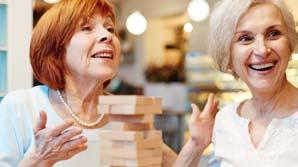






About the author Robin Stevens Payes is the author of four novels for middle grade to YA readers. She offers workshops on storytelling and is in the process of launching a company that focuses on relationship solutions for mothers and their teen daughters.
Byline: Jan Rupnick is the director of public relations for CRL Senior Living Communities. CRL owns and operates state-of-the-art senior care residences that deliver the highest quality, cutting-edge level of care in specially designed therapeutic environments. The company meets the needs of seniors with independent living, assisted living and Alzheimer’s/dementia care communities.
MARCH 2017 MHL 31
See what’s new at St. Anne’s. St. Anne’s Salvatorian Campus 3800 N. 92nd Street, Milwaukee 53222 www.stannessc.org Take a tour of our innovative enhanced assisted living facilities or visit our renovated chapel. Call 414-463-7570. Caring for people since 1876. 140 years old and still turning heads.
February 2023 MHL 47
Generations<<page 40












































































 By Kalpana (Rose) M. Kumar, M.D.
By Kalpana (Rose) M. Kumar, M.D.












 Revitalize Wellness Corner with Lee Zehm-Clay RN, BSN, FCN, HES St. Camillus Revitalize Wellness Manager
Revitalize Wellness Corner with Lee Zehm-Clay RN, BSN, FCN, HES St. Camillus Revitalize Wellness Manager






























































































 By Robin Stevens Payes
By Robin Stevens Payes



















































